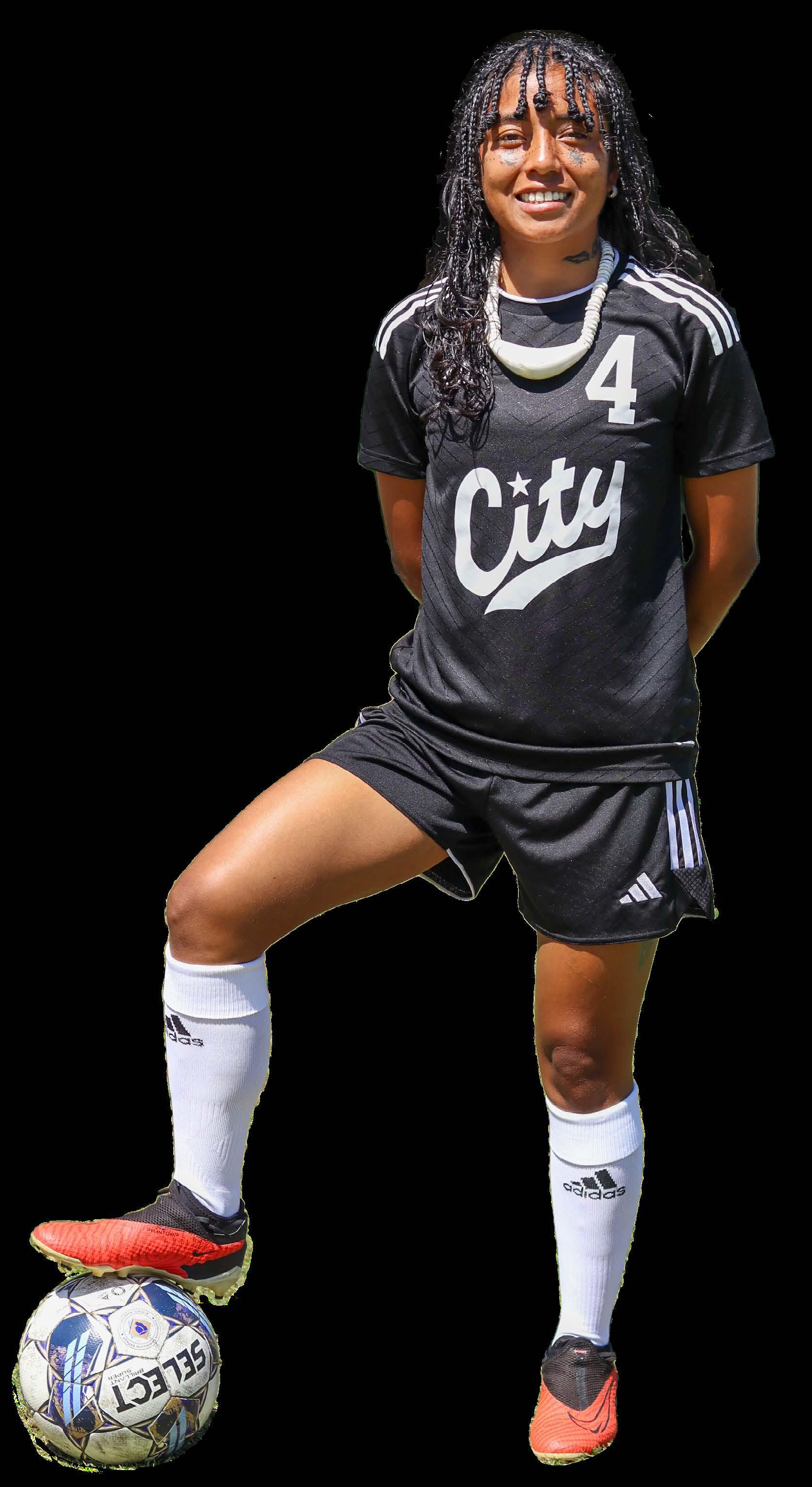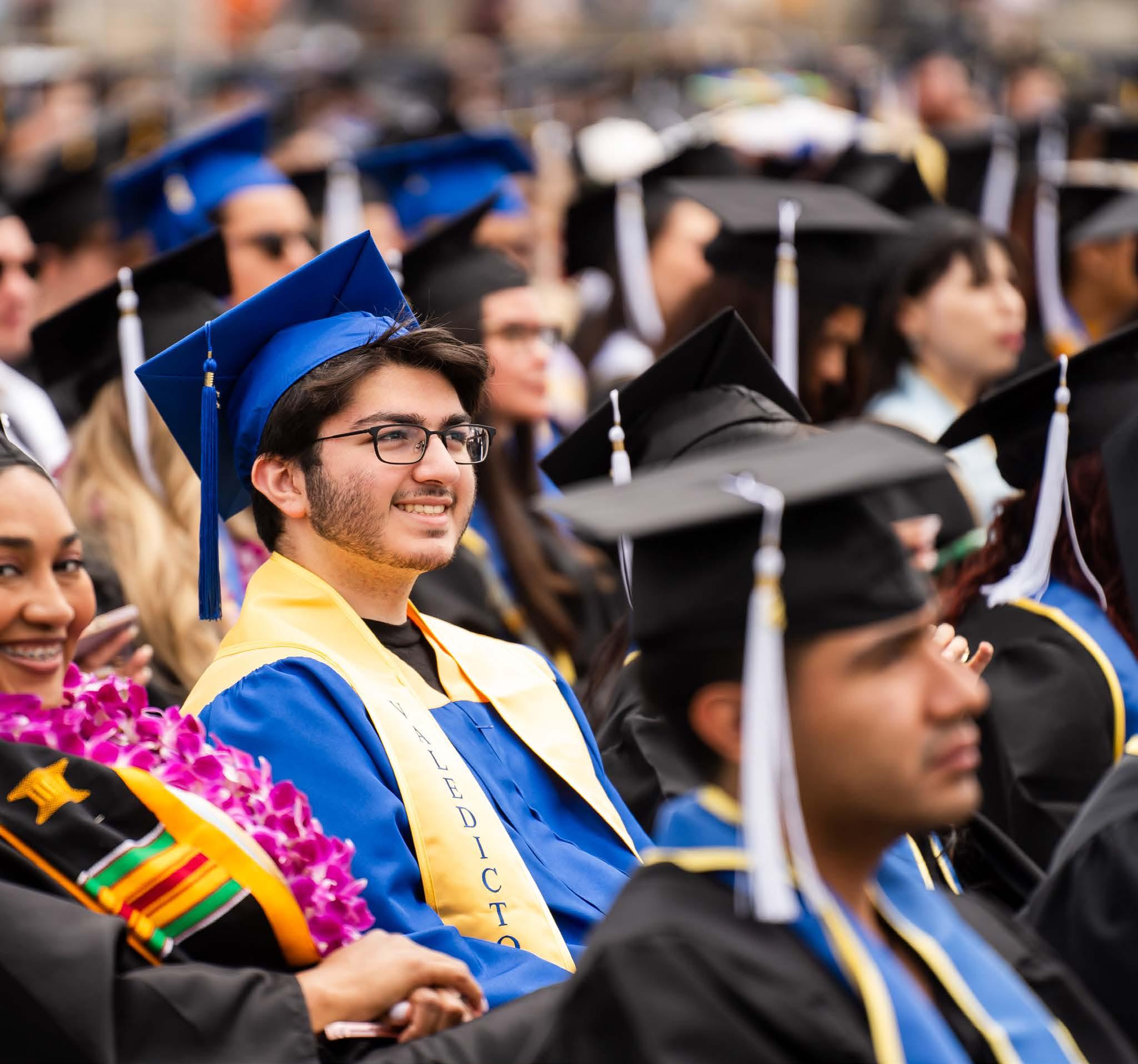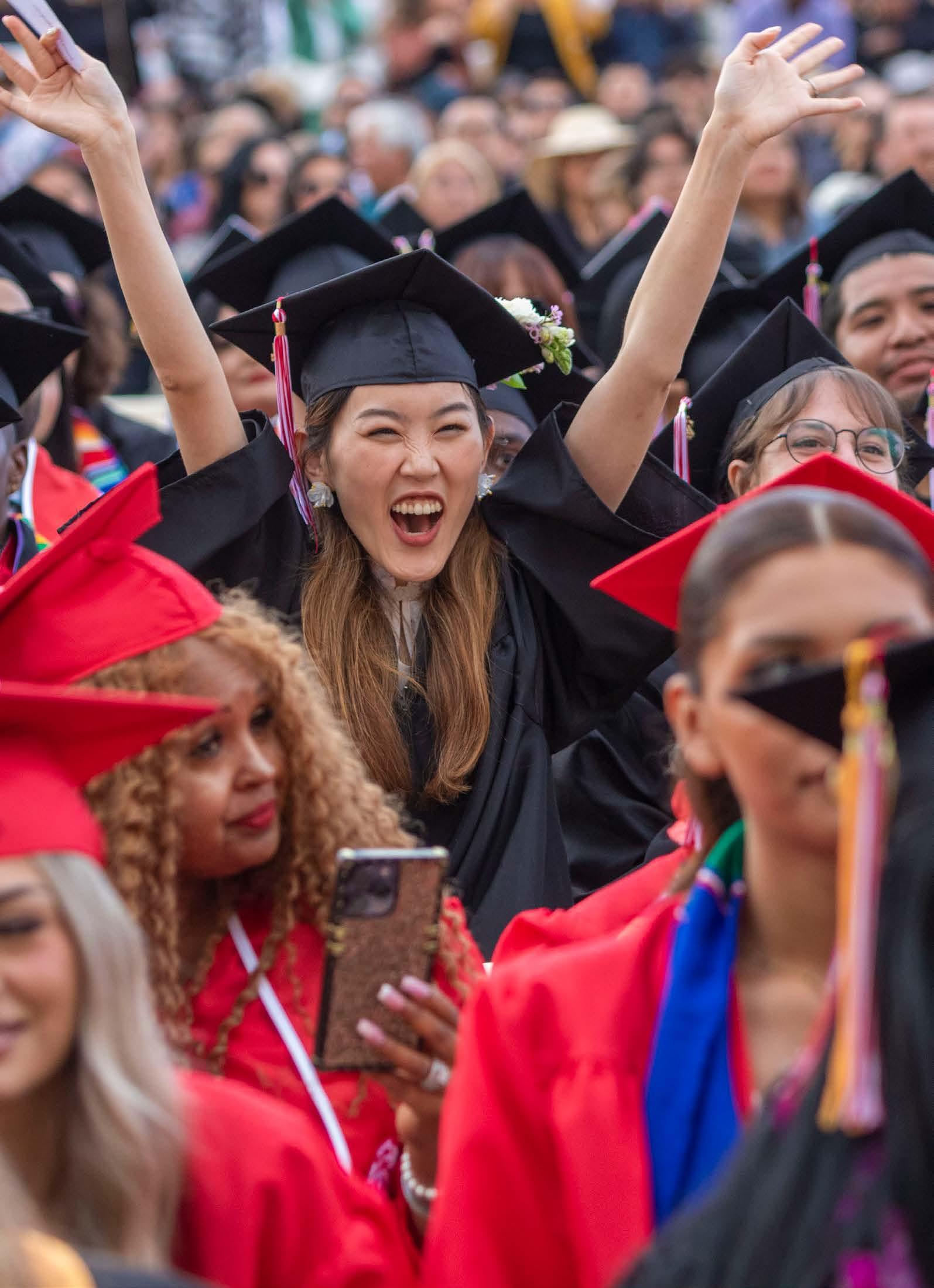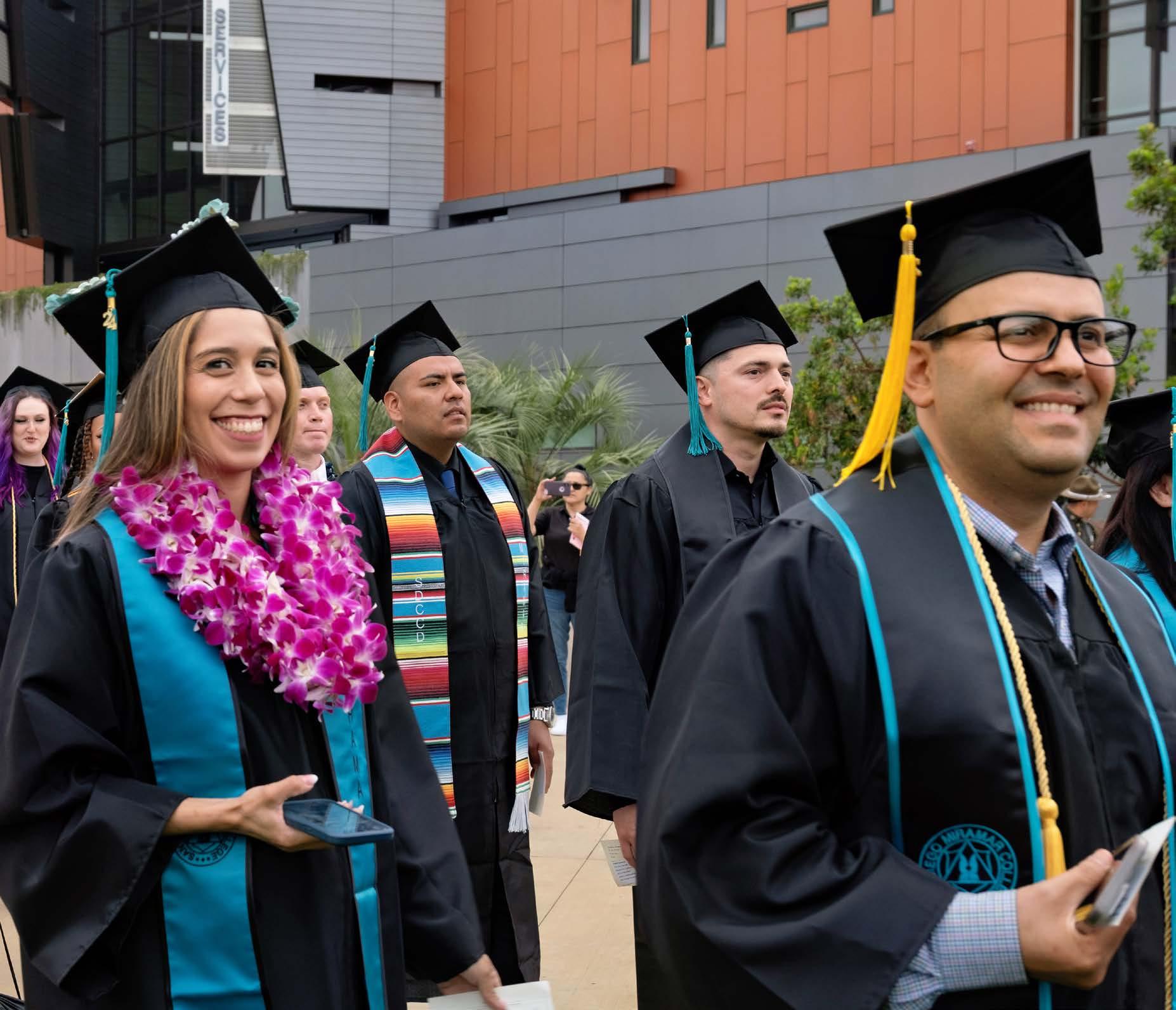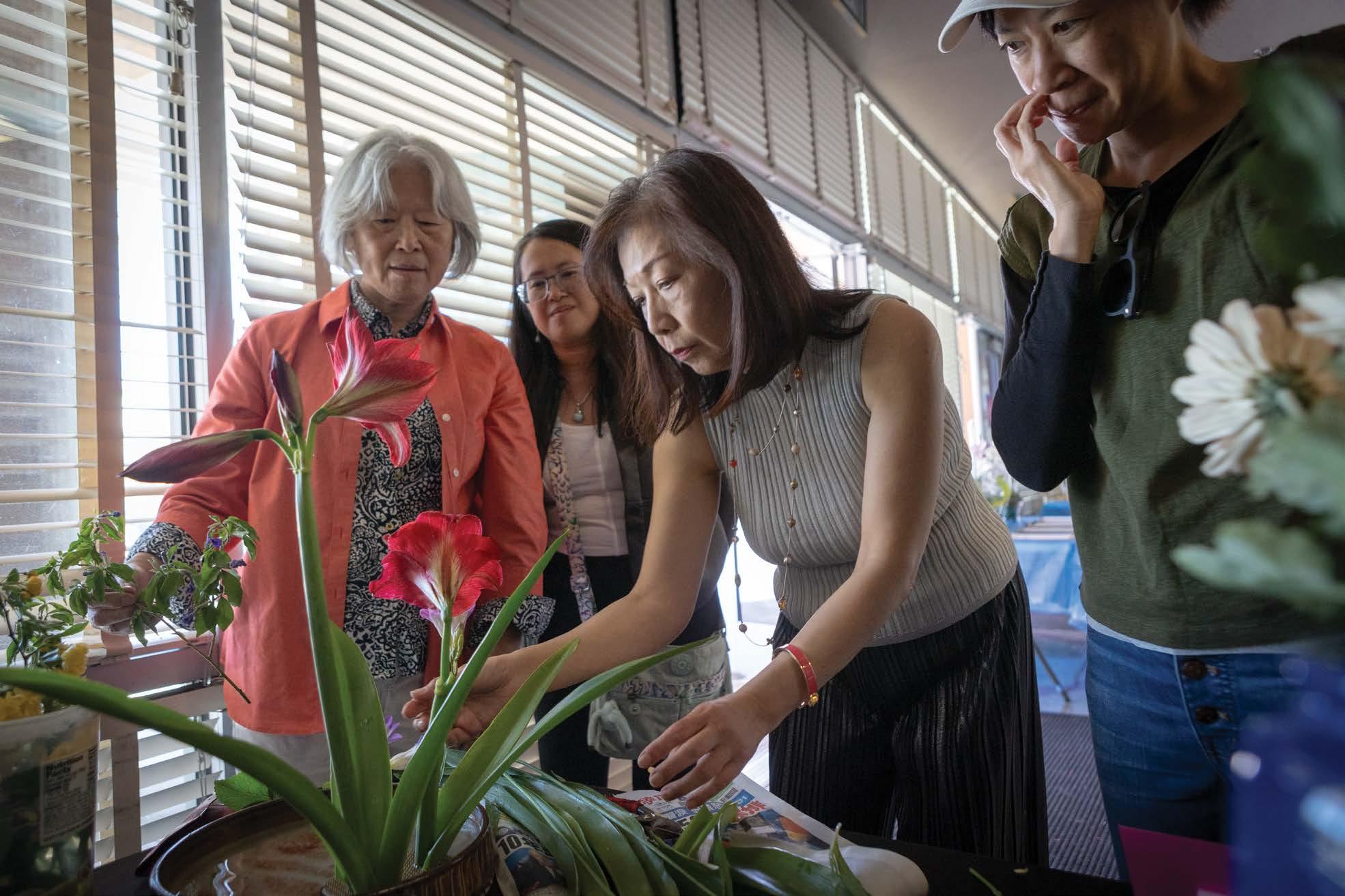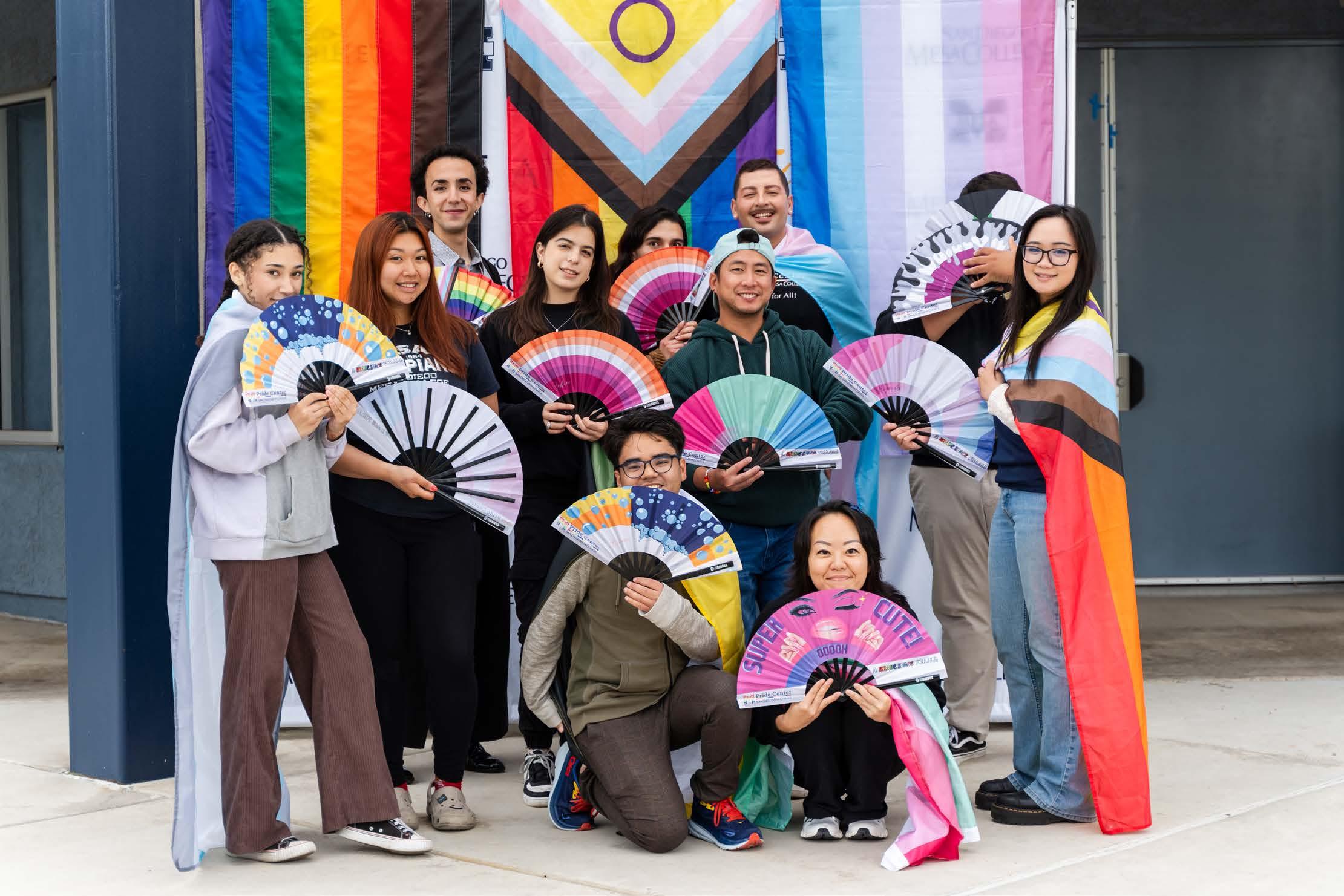
City College
Mesa College
Miramar College
College of Continuing Education
THE SKY'S THE LIMIT
STORY ON PAGE 08



City College
Mesa College
Miramar College
College of Continuing Education
STORY ON PAGE 08

A recent economic impact study found that the San Diego Community College District, our four colleges, our employees, and our current and former students are contributing an astounding $5.8 billion to the regional economy. The study affirms the importance of accessible higher education to the socioeconomic upward mobility of our community members and the well-being of the entire San Diego region. On November 5, 2024, San Diego voters expressed their appreciation and support for our mission by passing Measure HH, a $3.5 billion bond that will modernize educational facilities across our four colleges.
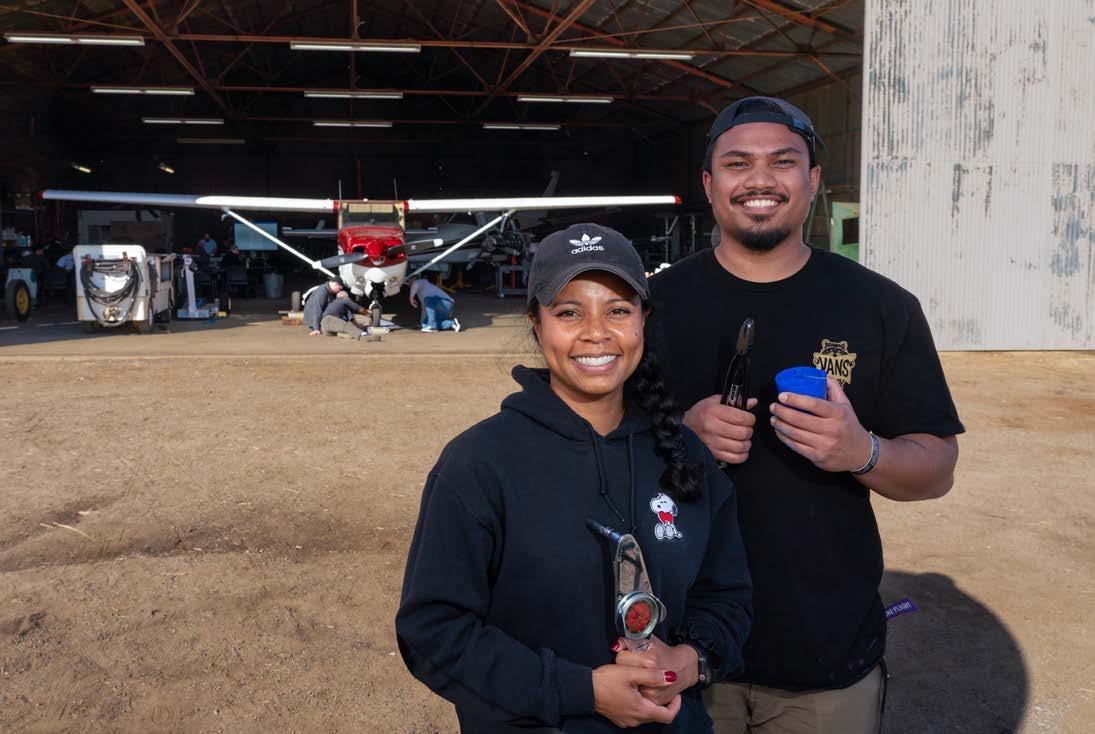
Miramar College Aeronautics and Aviation Program students outside of the school's hangar at the Montgomery-Gibbs Executive Airport.
The Aeronautics and Aviation program at Miramar College, featured in this issue, is an excellent example of our critical workforce development role in the region and how the bond program will propel us into the future. With the community’s support, we will replace decades old facilities — including an aviation hangar built more than 75 years ago at Montgomery-Gibbs Executive Airport — with state-of-the-art, modern classrooms and equipment that will prepare students for livingwage careers in the aviation industry.
Providing high quality, affordable education in high
demand career fields is essential to the mission of our District and colleges. Equally important is ensuring every member of our community has access to and benefits from our programs.
The SDCCD has a rich history of leadership in serving diverse student communities, providing inclusive and accessible educational programs and services, and increasing equity in outcomes. In a time when divisive rhetoric dominates public and political discourse, our continued leadership is critical.
The District and its colleges are working to expand support and services for undocumented, LGBTQIA+, veteran, and other diverse cultural communities. We are strengthening existing relationships and establishing new partnerships with organizations aligned with our mission to provide every student access to the support they need to continue pursuing higher education. We are expanding pathways from our education programs at San Diego College of Continuing Education to City, Mesa, and Miramar colleges to provide lifelong career and economic mobility opportunities. We are embracing innovations in teaching, learning, assessment, and services to increase cultural relevance and equitable outcomes. There is considerable work ahead as we evolve to meet the needs of our communities. No matter the obstacles, I am ready and excited to take on the challenges before us, and I welcome everyone to join in our mission of serving students.

Chancellor Gregory Smith

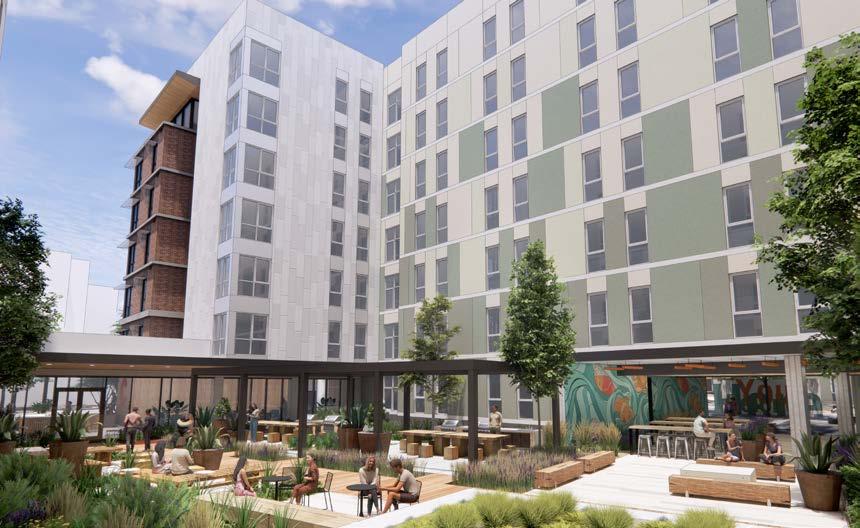
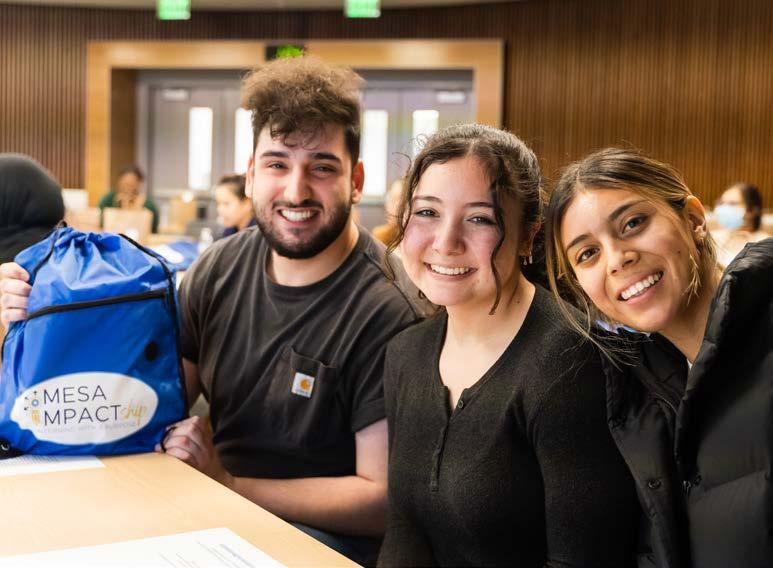
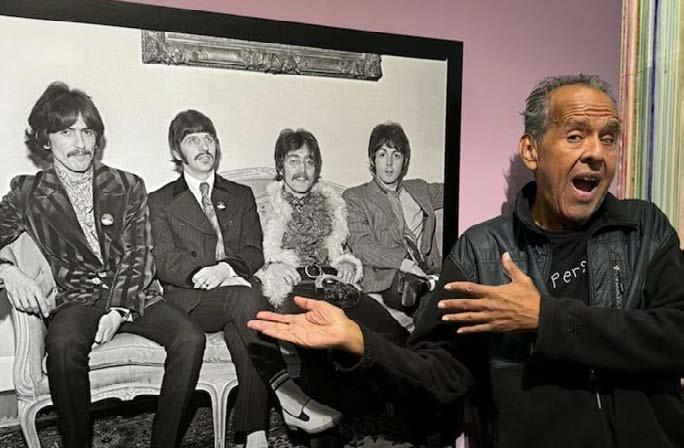








Professional surfer and longtime educator Lisa Carulli, Ed.D., is making waves of change at San Diego College of Continuing Education. California’s leading noncredit college is seeing unparalleled support for the LGBTQIA+ community.
“I’ve been working for the District for over two decades, and I have never felt the need to censor or edit who I am. I feel supported not only from the Chancellor’s Office but throughout the entire organization. No one should feel unsafe or unwelcomed because of who they are,” said Carulli, who was hired in 1998. “As an educator, I want to be an advocate for our marginalized student population. I don’t want anyone to go through what I went through growing up in Florida, trying to earn a spot on the world’s stage as a professional surfer.”
To advance LGBTQIA+ equality on campus, Carulli co-led the institution’s inaugural Intersex Inclusive Progressive Pride Flag raising ceremony in 2023 alongside the San Diego Community College District and helped launch SDCCE’s first diversity, equity, and inclusion campaign “Hate is Not Us” in 2015. Now she leads Safe Zone Trainings, teaching the importance of using inclusive language, and is a member of the SDCCD District Queer Alliance.
Inspired by her mom’s acquired brain injury and post rehabilitation challenges, Carulli started her career supporting the Acquired Brain Injury (ABI) program at College of Continuing Education.
Following 15 years with the ABI Program, Carulli transitioned to become a counselor at the college, where she now supports more students with education plans. She was named LGBTQIA+ Student Success Coordinator in 2022. Since then, she has also helped facilitate the institution’s first-ever Pride

























community celebration event held at the Educational Cultural Complex in June, a women’s history month all-female, pro-surfer panel, intersectional outreach for LGBTQIA+ students in partnership with the Immigrant-Based Support Program and Be Well mental health program, and recently was a panelist during the District's inaugural Town Hall.
Before academia, Carulli was breaking barriers as a professional surfer. “I am a part of the LGBTQIA+ culture. I was a pro-surfer for 12 years, and as a result of being �outed’ on the pro tour, I lost sponsors and opportunities,” she said. “It was taboo to be gay in the then maledominated world of professional surfing. These peaks and valleys of my journey have created the person I am today.”
Coming out is a deeply personal experience, one that Carulli remembers fondly. “I have always been able to be authentic since an early age. But not everyone can do so safely.”
She added, “Because of the vulnerable populations we serve and our many languages, dialects and cultures, it is so important we all work together to protect our students.
All are welcome at College of Continuing Education, you can be here and be who you are. We will celebrate you — all of who you are.”




With family, friends, and SDCCD employees looking on, the San Diego Community College District welcomed two new governing members during the December 19, 2024, Board of Trustees meeting. Community activist Mariah Jameson and retired San Diego Mesa College Professor Marichu G. Magaña replaced retiring Trustees Mary Graham and Bernie Rhinerson.
Jameson, a former foster youth, works for San Diego County Supervisor Monica Montgomery Steppe and with RISE Research & Evaluation. Growing up in Southeast
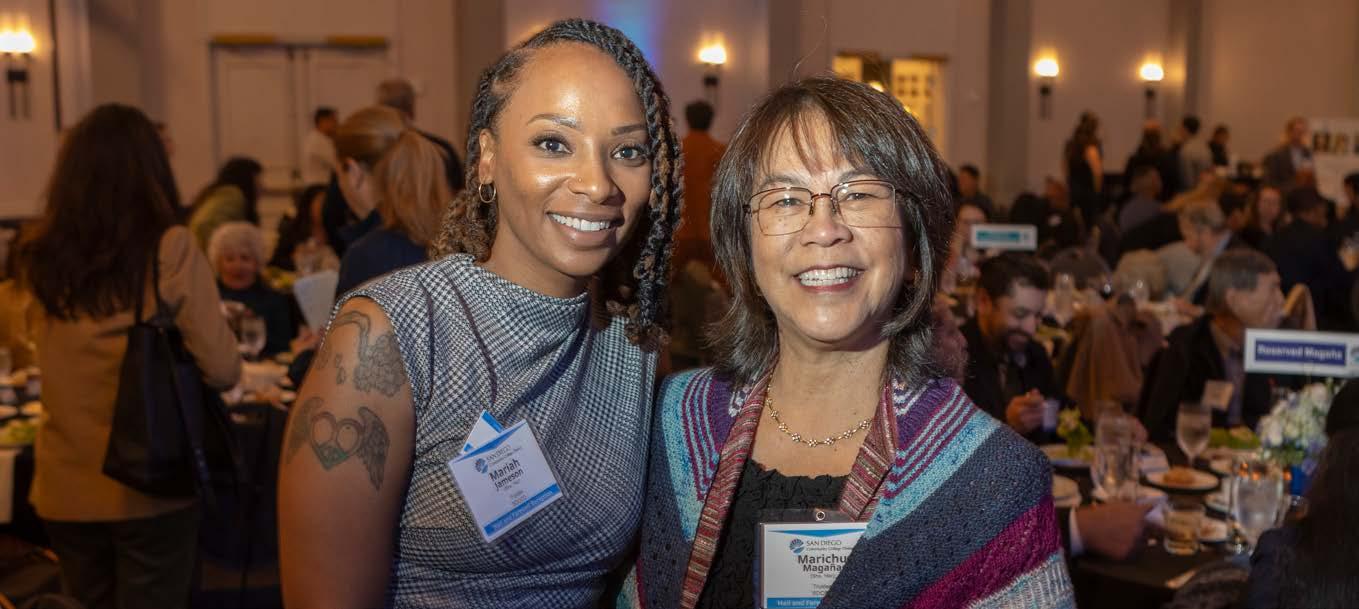
San Diego, Jameson graduated from Lincoln High School, attended San Diego City College and transferred to Clark Atlanta University, the first historically Black college or university in the South, where she earned her bachelor’s and master’s degrees in social work, focusing on mental health. She is committed to providing the support and wraparound services
for students from underserved and longignored communities to help them succeed, which she says is critical to raising overall student academic achievement.
Magaña spent 25 years as a counselor and professor at San Diego Mesa College and has served on numerous U.S. Department of Education TRIO and GEAR UP Program panels
responsible for evaluating project proposals in highly competitive grant competitions. Her focus is on student success for all and, like Jameson, aims to provide the conditions for underrepresented, lowincome, first-generation college students to thrive. A longtime Mira Mesa resident, Magaña earned her doctorate in psychology from Alliant International University,
a master’s in counseling from San Diego State University and a bachelor’s degree in psychology from UC San Diego.
This is the first time since 2018 — and just the third time this century — that the five-member Board of Trustees will have seated two new members. Magaña and Jameson join returning trustees Geysil Arroyo, Craig Milgrim, and Maria Nieto Senour.
The San Diego Community College District’s tuition-free San Diego Promise program reached $3,059,822 in funds raised, thanks to a donation from longtime supporter of the program U.S. Bank. The donation of $100,000, the second of that size in as many years, will assist students who may not otherwise be able to afford college.
“At U.S. Bank, we strive to enhance access to opportunities that improve lives,” said Enrique Meza, U.S. Bank community affairs manager in San Diego. “We’re proud to work with organizations like the
San Diego Community College District to help provide pathways to higher education and build thriving communities.”
The San Diego Promise program, founded in 2016, covers two years of tuition and fees, and provides book grants and wraparound services for qualified students attending San Diego City, Mesa, or Miramar colleges.
U.S. Bank’s Community Possible platform, which includes philanthropy and community investments, is a natural fit for the San Diego Promise, as the program provides
unparalleled access to a community college education by removing financial barriers and other support for thousands of students.
Charitable contributions to the San Diego Promise have been critical in expanding the program to some of the District’s most vulnerable students, such as current and former foster youth, veterans, the justice impacted, and those supporting siblings, children, or parents.
When it launched nearly 10 years ago, the San Diego Promise pilot program, supported by private funds, had an initial cohort of 186
students whose first year came tuition free.
A record 2,601 students enrolled at San Diego City, Mesa, or Miramar college through the San Diego Promise program this past fall, and, since inception, nearly 16,000 students have benefited from a SDCCD education through the program.
“The future for countless students is being transformed, thanks to the generosity of supporters in the San Diego community who see the value of investing in a high-quality college education,” said Laurie
Coskey, the District’s vice chancellor of Development and Entrepreneurship.
“We and our Promise students cannot overstate how thankful we are to U.S. Bank for its continuing support of this vital program.”
Learn more about the San Diego Promise at sdccd.edu/promise.
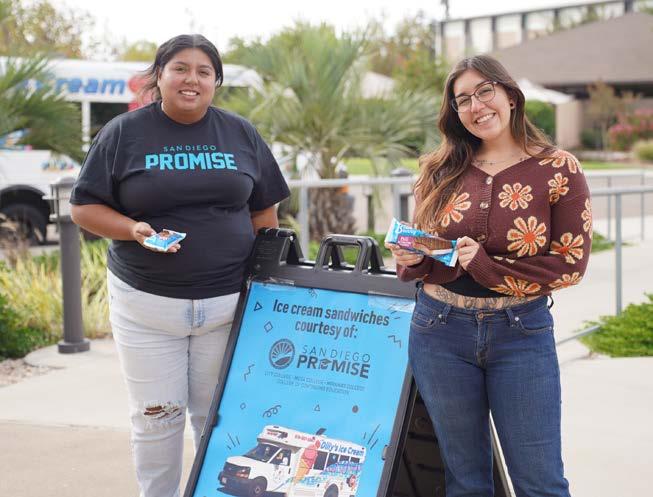
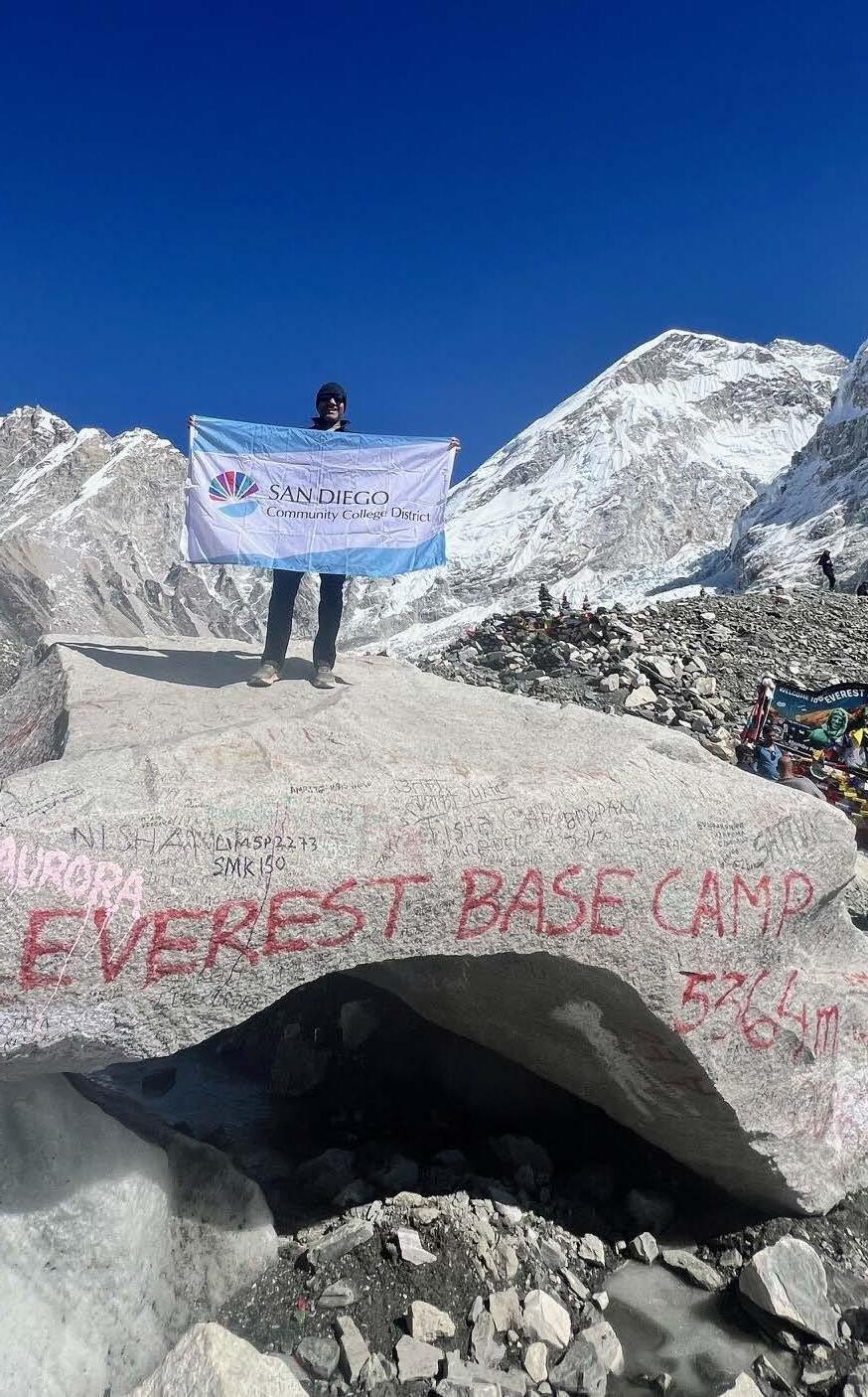
San Diego Community College District
Associate Vice Chancellor Peter Maharaj recently journeyed to the Mount Everest Base Camp at the Khumbu Glacier in Nepal. Upon arrival at the iconic monument perched 17,598 feet above sea level, he hoisted a flag displaying the District’s new logo. He said of this moment: “It was a really proud moment for me. On that particular day it was a really challenging experience because that’s where, due to the oxygen level, I was really feeling it. I felt as though I was holding on to a string just trying to stay upright.”

A multiyear collaboration between the San Diego Community College District and UC San Diego to boost the numbers of students studying and embarking on successful careers in the humanities is receiving a pair of grants totaling $3 million from the Mellon Foundation. The monies mark the third round of support received since the program’s inception in 2016.
The latest grants strengthen and expand the Preparing Accomplished Transfers to the Humanities (PATH) program, a collaborative transfer student support effort led by the SDCCD and UC San Diego’s School of Arts and Humanities. Titled Integrating the Arts & Humanities for a Career and Social Justice Impact, the fouryear partnership focuses on faculty development, curricular innovation, and career preparation. This will be achieved by establishing a Humanities4Careers paid internship program; enhancing a doctorate fellowship program; mentoring students in a yearlong social justice research project; providing workshops and panel discussions focused on equity practices and career options; and more.
program) exemplifies this mission by fostering collaboration between institutions, bridging education and career opportunity gaps, and embedding a strong foundation of social justice principles into the humanities.”
At the launch of the PATH program, the Mellon Foundation awarded UC San Diego and the SDCCD a pair of grants totaling $2.59 million over three years to support underrepresented humanities students who are interested in transferring to UC San Diego. Participants benefited from mentorships, workshops, a summer academy, campus visits, and more.
60%
increase in applications to UCSD from SDCCD transfer students between 2015 and 2024
For the past eight years, UC San Diego and the SDCCD have demonstrated tangible success in Mellon-funded collaborative efforts.
Applications to the university from SDCCD transfer students have increased by 60% between 2015 and 2024. In addition, School of Arts and Humanities majors have grown more than 78% over the same period.
“Our mission at the San Diego Community College District has always been to empower students through inclusive and forwardthinking educational programs,” said Susan Topham, SDCCD vice chancellor of Educational Services. “PATH 3.0 (the third round of the
The latest iteration of the PATH program seeks not only to ensure the continued relevance and career viability of humanities degrees, but also to nurture a new generation of leaders and professionals who can enrich both the academic landscape and social justice discourse.
“PATH 3.0 is a powerful example of what can be achieved when institutions work together with a shared vision,” Topham said.


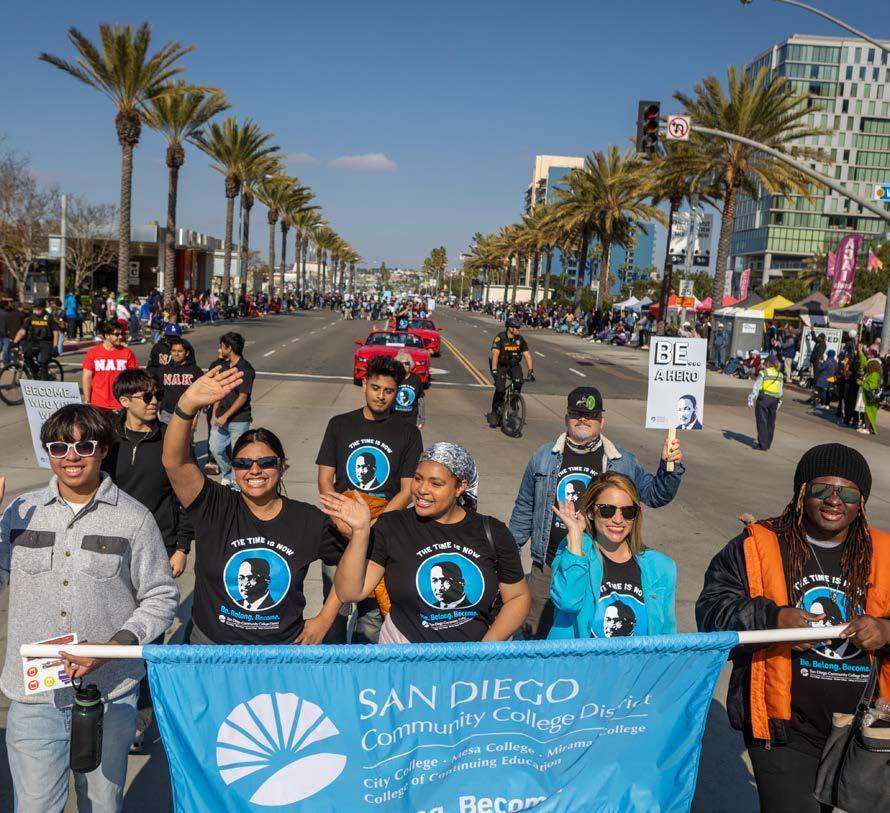
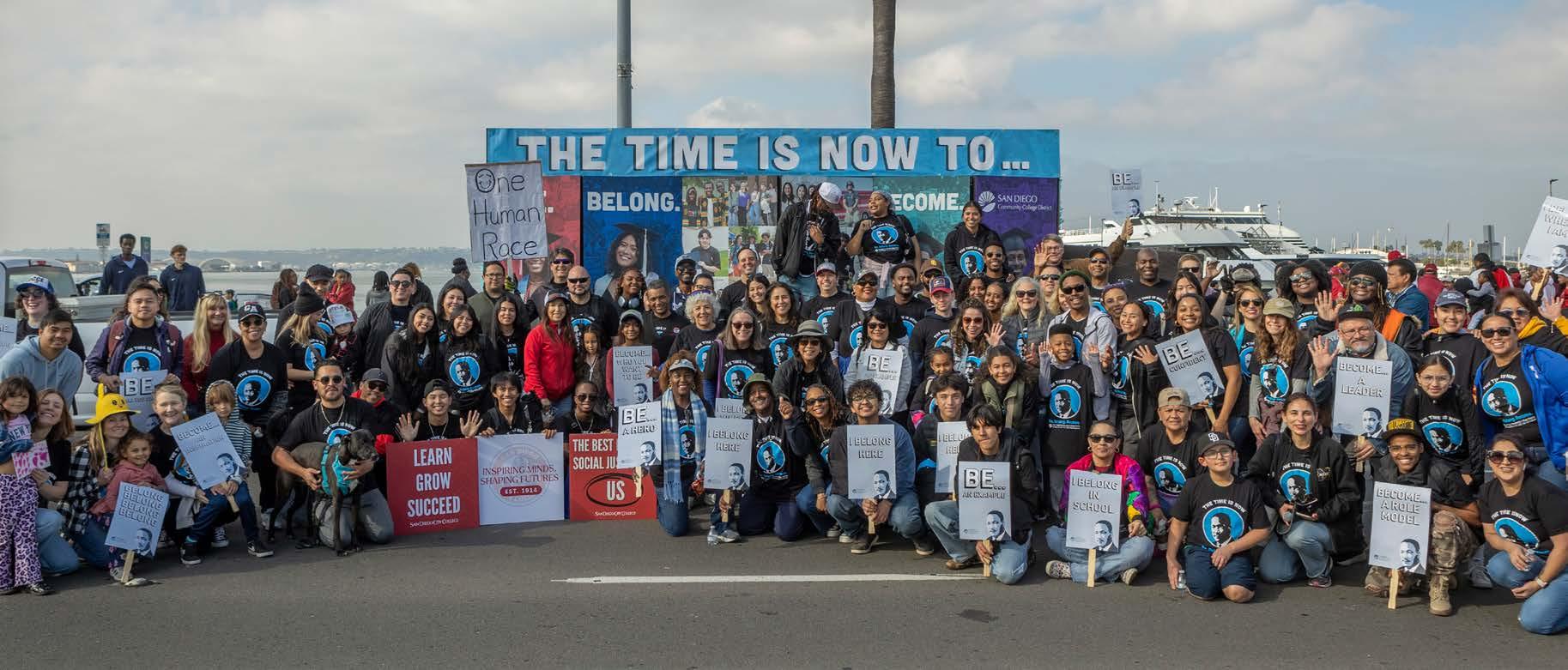
The San Diego Community College District showed off its new cyan blue color during this year’s Martin Luther King Jr. Parade — the first districtwide public event since the District’s new brand was launched in September 2024. Hundreds of students, faculty, classified professionals, College Police, and administrators walked alongside two floats and carried signs that paired the District’s new tagline, “Be. Belong. Become.” with motivational calls to action.
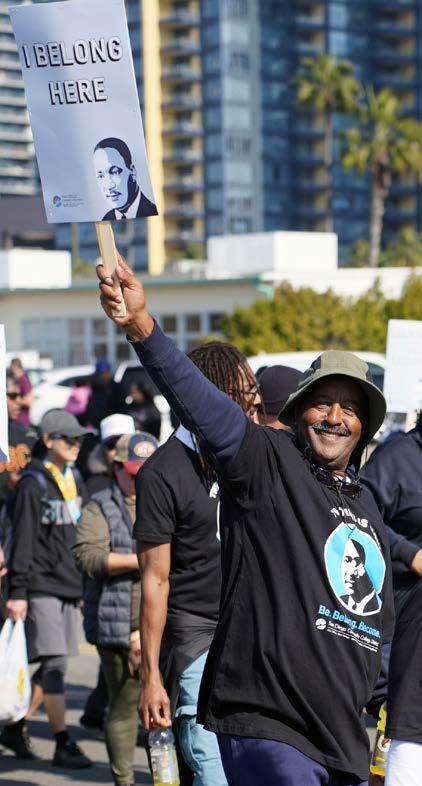


Alethia Forsing was working as a Starbucks barista when she caught wind of the San Diego Miramar College Aeronautics and Aviation Program that’s been training avionic technicians, aviation mechanics, airport personnel, and future pilots for generations. A native of New Hampshire whose dad was a mechanic and who herself was once employed as a mechanic at an amusement park in the Granite State, Forsing said enrolling in the program’s Aviation Maintenance Technology division was an easy decision.
“Everyone here has been very supportive,” said Forsing, who has learned more about reciprocating engines, fabric doping, the Rockwell hardness test, and rebuilding landing gears than she ever thought possible. “They are motivated by helping us learn.”
Indeed, Miramar College's Aeronautics and Aviation Program with its two divisions is the only low-tuition, FAA-approved aviation maintenance (Part 147) and pilot (Part 141) schools in the region.
The Aviation Maintenance Technology and the Aviation Operations divisions both play a critical role in meeting a rising demand for drone pilots, airport operations staff, top-flight mechanics, avionics technicians, and more. Forsing, like virtually all graduates of the programs, will not be wanting for a job when she completes her training.
“There is a historic need for aircraft mechanics,” said Miramar College’s Aeronautics and Aviation Chair Max Moore who regularly sees postings for airframe and powerplant (A&P) mechanics that pay well into the $80,000-plus range annually. “Everybody’s fleets are growing larger and a lot of the existing mechanic workforce is retiring. Just about every one of our A&P students who wants a job gets a job.”
Added Daniel Smith, an assistant professor and director of the Aviation Maintenance Technology division that offers a 78-unit, five-semester curriculum
required to take a licensing test for an FAA-required Mechanics Certificate: “Whenever Delta Air Lines has an opening for a mechanic, they’ll reach out to me and we’ll hook them up.”
It’s not just at Delta that students trained at Miramar College are working. Duncan Aviation, the largest privately owned business jet provider in the world, also collaborates closely with the program’s instructors, and several Miramar College students have progressed to internships and fulltime jobs with major airlines. Others have embarked on solid careers keeping aircraft in top condition at smaller airports.
Similar stories are echoed in the Aviation Operations Program, which integrates simulator flight training with rigorous academic study for a first-class foundation in mastering the technical fundamentals of flight, airport operations, and safety. Students completing the two-year associate degree program meet qualifications for taking the FAA Airman Knowledge Test that can lead to various pilot certificates and transfer to a flight school. Aviation Operations also offers a growing number of courses in unmanned aerial vehicles, also known as drones, providing a pathway into the burgeoning drone industry.
Miramar College’s aviation roots stretch back further than the college itself — even before the aviation maintenance program began to soar when a hangar was built at the main campus on Black
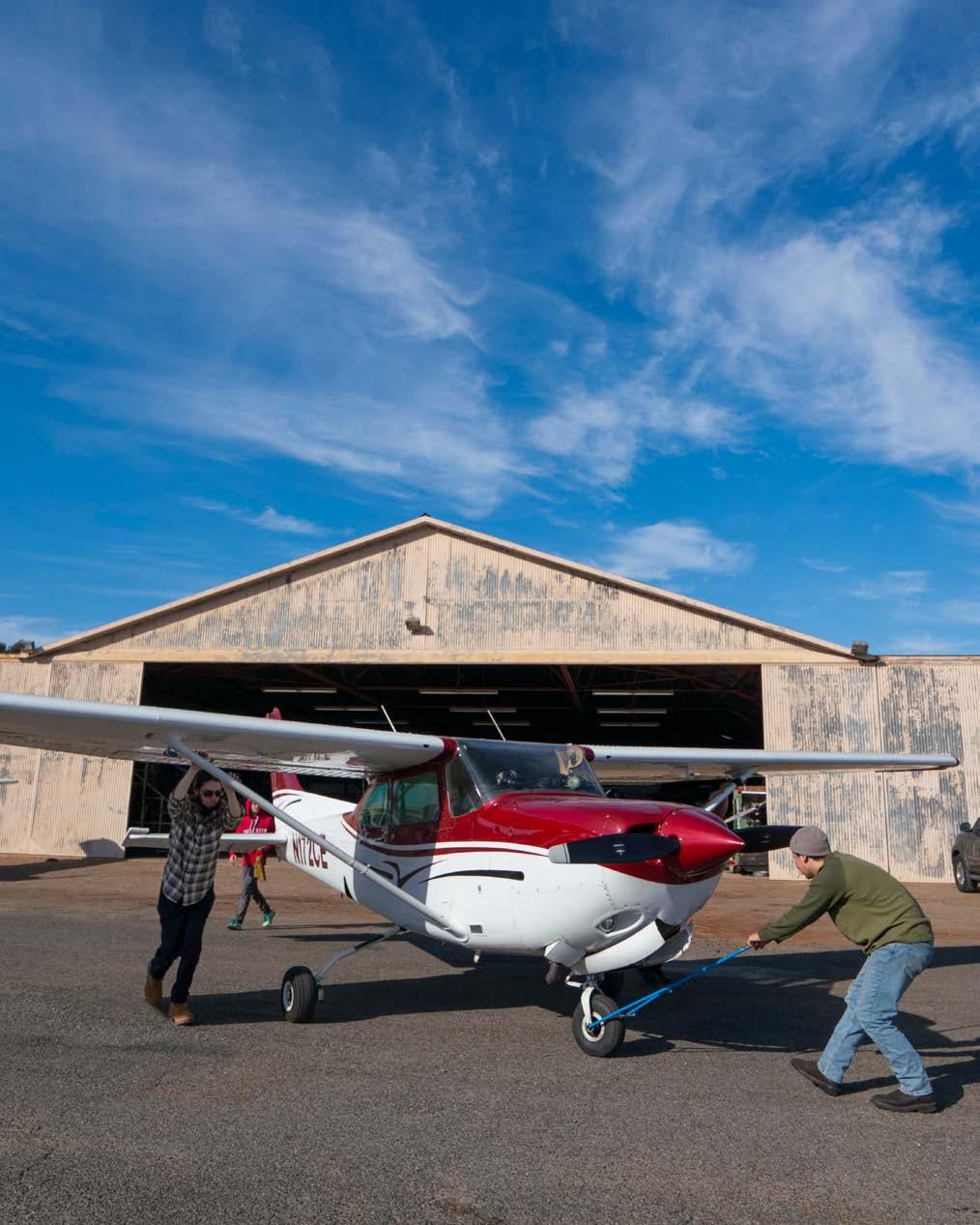
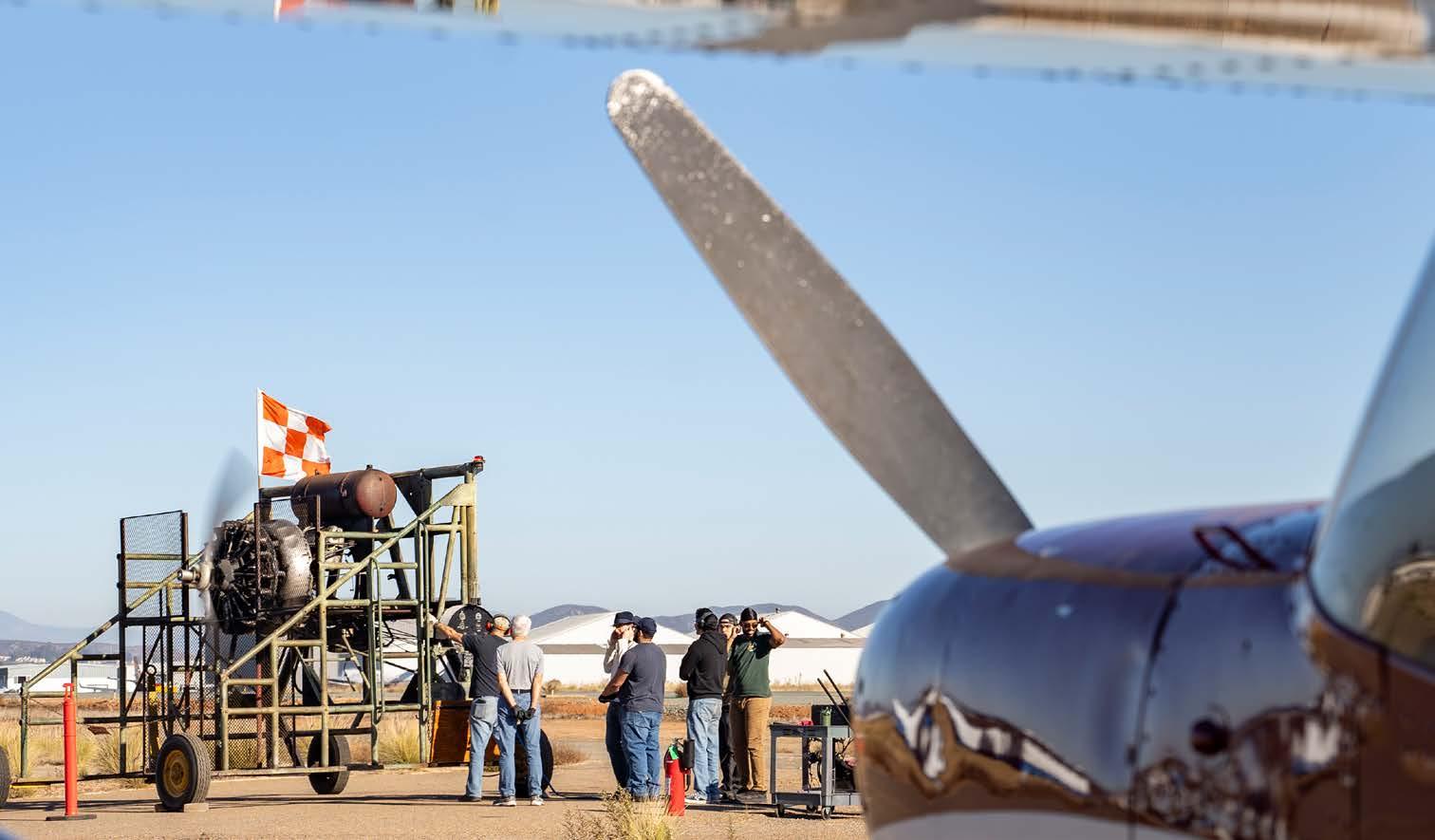
Mountain Road in 1971. In fact, Miramar College sits at the site of a former auxiliary landing field — Hourglass Field — for Naval Air Station Miramar. And it certainly is no coincidence it has developed strong ties to the military; the Aeronautics and Aviation Program employs a full-time liaison attached to Marine Corps Air Station Miramar just a couple miles south. And Moore, who, like Smith, served in the Marines, estimates well more than one-third of students in the A&P program are military veterans.
“We’ve had students come here from just about every military base in Southern California,” he said, adding that program personnel regularly visit bases in the region to discuss the program’s benefits with those on the cusp of transitioning to civilian life.
Alex Noack is one such veteran, having served in the Marines for more than five years as an avionics technician on CH-53E Super Stallion heavy-lift helicopters used to transport troops, equipment, and supplies. His goals: secure his A&P certificate and license, earn a bachelor’s degree, and work on small planes. He found what he was looking for at Miramar College.
“I honestly do appreciate how it’s not overly packed with people, which allows you to connect with your professor,” he said. “A lot of the instructors have a military background, and it’s easy to build close relationships and develop friendships with the people who are here.”
Most important, said Noack: “They all want you to succeed. They are not here to have you fail.”
That’s what drew Eli Damas who teaches general aviation in the A&P Program. He came to Miramar College in fall 2024 after working as an aircraft maintenance supervisor for UPS at Ontario International Airport in San Bernardino County.
“I’m here for these students who are committed to what they’re doing,” he said.
Reciprocating
have the opportunity to get hands-on training on planes such as a single-engine Cessna 150. During an Aviation Operations class, students guide a plane from the school's hangar to be used to practice taxiing around the runway.

Crystal Castaneda embodies the potential for students in Miramar College’s Aeronautics and Aviation Program. Before she earned her associate degree from the maintenance program in 2021, the 25-year-old San Diego resident was offered a summer internship with Duncan Aviation in Lincoln, Nebraska, where she assisted in servicing and inspecting aircraft and honed her skills working on various components. During her internship, Castaneda was offered a full-time job. She decided instead to return to San Diego, where she quickly found work maintaining Pipers and Cirrus SR22s, SR22Ts, and Vision Jets. Not bad for someone who never imagined a career in the aviation industry and who had never worked on planes prior to enrolling in the program.
“Miramar prepared me well,” she said. “There was a bunch of material given to us from the beginning, a lot of reading, a lot of studying, but the instructors are there for you and the labs are really hands-on. It’s a hidden gem.”
And it soon promises to become an even more impressive jewel. With San Diego voters approving Measure HH in the November 2024 election, significant upgrades to the aviation program are now on the horizon. Miramar College will soon have the funding for a new hangar at Montgomery-Gibbs Executive Airport in Kearny Mesa to replace an outdated facility, built more than 75 years ago, that is critical to the program, provide additional classroom space, and perhaps purchase a new flight simulator.
“The aviation program is a core part of our college,” said Miramar College President P. Wesley Lundburg. “The facilities we currently have at the airport are not adequate for the classes we’re currently offering.”
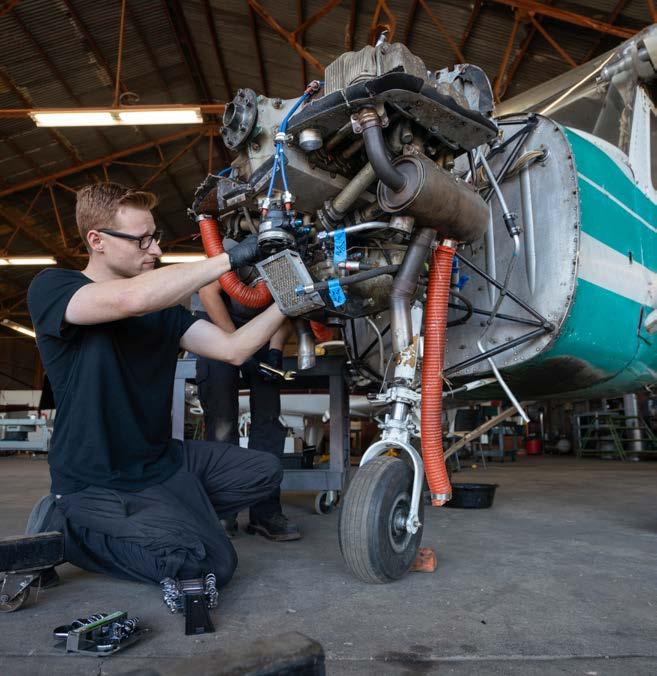
Despite the current limitations, approximately 30 students graduate from the A&P program annually. Virtually all pass FAA licensing exams.
“It’s been a blast,” said Forsing. “I love planes, I love working as a mechanic, I love keeping people safe; it’s just a great combination that led me here.”
It’s all about strength in numbers. That’s the idea behind the California Community Colleges Aviation Alliance, which is uniting college aviation programs across the state to stay on top of the latest industry trends, share best practices, and speak with a unified voice in lobbying for state and federal funds — all in the name of securing additional resources for students.
The initiative got off the ground after San Diego Miramar College President P. Wesley Lundburg and Reedley College President Jerry Buckley found themselves in an impromptu discussion about their aviation programs during a 2023 Community College League of California conference. Then came the “aha!” moment.
“We said, ‘What if (California community colleges) all got together to leverage our ability to get funds by coordinating our efforts? How do we strengthen what we’re doing to benefit our students?’ ” Lundburg said. Both began reaching out to other colleges. “It’s been taking off faster than we could have hoped for.”
The Alliance developed a mission and vision statement and detailed a series of goals and objectives, including promoting diversity and inclusion through scholarships and financial aid programs, as well as enhancing student pathways by expanding internships and industry partnerships.
In a little more than a year, the Alliance has held several workshops, such as an October 2024 event at Miramar College with representatives from 21 community colleges to hear from a trio of FAA officials— a Procurement Services and Grants Management division manager, a Grants Management branch manager, and an Aviation Workforce Development Grants Program coordinator — who detailed effective strategies when writing and applying for federal grants. Miramar College applied for one of the grants discussed, which targets student populations underrepresented in the aviation profession, and is awaiting news about the award.
The Aviation Alliance also is launching a new website and developing a logo to help with marketing and outreach. Meanwhile, cooperation among college programs has never been better. Miramar College’s Aeronautics and Aviation Chair Max Moore spent part of last summer at Reedley College 25 miles southeast of Fresno to learn more about Reedley’s recent aviation program expansion.
All of which fits into the heart of the Alliance’s strategic plan: collaborating effectively to enhance educational quality, increase access to aviation careers, and build a skilled workforce for the future.
Initial projects will focus on affordable student housing, a renovated aviation facility, and expansion of the Educational Cultural Complex
The San Diego Community College District in January successfully sold an initial $850 million of general obligation bonds following voter-approved Measure HH. The $3.5 billion bond measure, which will upgrade, repair, and modernize its campuses throughout the city, secured support from more than 60% of San Diego voters in November 2024. Bond sales will be spread out over the next two decades. Funding through the initial sale of Measure HH bonds will fund several key projects, including new affordable student housing at San Diego City College; an English and Student Resource Center at San Diego Mesa College; a renovated aviation facility operated by San Diego Miramar College at Montgomery-Gibbs Executive Airport in Kearny Mesa; and the expansion and renovation of San Diego College of Continuing Education’s historical Educational Cultural Complex in the southeast San Diego community of Mountain View.
Joel Peterson, SDCCD’s vice chancellor of Operations, Enterprise Services, and Facilities, said District leadership began meeting with bond underwriters, bond counsel, and other advisers prior to November to help ensure the SDCCD would be ready to move with a bond sale shortly after voter approval.
“The District has been very intentional, and we’ve done a lot of planning to ensure that we minimize the cost to taxpayers and maximize the return on their investment, and one of the key factors in that is time,” Peterson said. “The quicker we can begin these projects, the lower the cost will be. By being among the first in the state to issue bonds (among those that voters passed in November), we will have less competition in the bond market and the interest rates will be lower.”
Of the initial $850 million in Series A bond sales, $700 million are tax-exempt, significantly reducing financing costs for taxpayers through lower interest rates while also minimizing tax burdens for bondholders. The District’s timeline had underwriters buying the bonds from the District in January to sell to institutional and private investors,

with proceeds held by the San Diego County Office of Education until needed.
Also in January, the SDCCD Board of Trustees held an open application process to establish a Citizens’ Bond Oversight Committee. The Board during its February meeting approved new committee members, who held their first meeting March 4. A planning, programming, and design process will follow, with the design process anticipated to stretch into spring 2026. Peterson said building blueprints would be sent to the Division of the State Architect to approve project designs by the end of 2026, with construction beginning in early 2027, and the first projects completed by the end of 2028 or the first half of 2029.
Measure HH will result in an added 2.5 cents annual tax burden per $100 of a property’s assessed value and generate average annual construction funds of $168 million for SDCCD, meaning a home with an assessed value of $500,000 would pay $125 annually to help finance the measure.
For more information about Measure HH, visit sdccd.edu/measure-hh.




To view a video showcasing plans for the City College affordable housing development, scan the QR code or visit bit.ly/3QX858x.

Lexi Grey knew she wanted to go into the medical sciences ever since her father died of cancer when she was 5 years old. An internship at the Scripps Research lab in La Jolla, which she obtained while a student at San Diego Mesa College, helped her realize she wanted to focus on the science of the brain.
During her two-year internship, Grey participated in research studying the effects of alcohol addiction on the brains of rats. She gave a presentation in 2024 during the Society for Neuroscience conference in Chicago and will be listed as a researcher in a paper to be submitted to scientific journals.
Grey transferred to Johns Hopkins University, her dream school, and is pursuing a doctorate and medical degree in neurology. She said her bright future is all because she learned about the Mesa Impactship Program from Mesa College’s Internship Coordinator, Pavel Consuegra.
“At Mesa, I had the opportunity to support my passions,” Grey said. “I know I would not be here at Johns Hopkins without the support of Pavel getting me connected to doing research.”
Grey is one of many students within the San Diego Community College District who have benefited from an internship.
“The more hands-on experience that students have related to the careers and subject areas they are interested in, the more likely they are to confirm they actually like that work and get jobs in that field of study,” said Amertah Perman, SDCCD’s dean of Career Education and Workforce Development. “Employers are looking for students with experience, and an internship is the primary way to get that experience.”
The SDCCD’s three credit colleges, San Diego City, Mesa, and Miramar, all offer students some form of work experience, which awards college credit for Work-Based Learning. With a recent change in
federal regulations, San Diego College of Continuing Education, the District’s noncredit college, is now able to provide formal internship opportunities and is beginning to build out a local infrastructure, said Andrei Lucas, dean of Automotive, Skilled and Technical Trades at College of Continuing Education.
Launched in fall 2022, the Mesa Impactship Program empowers students by providing hands-on industry experiences through internships, volunteering, and Directed Clinical Practice. The program helps students explore careers, develop professional skills, and gain workforce training, with a strong focus on underserved student populations. Students who secure an internship through MIP are eligible to receive a one-time $1,000 payment to help cover expenses such as childcare, equipment, fees, meals, and professional attire while they are working.
The program was first initiated through leveraging the state’s Learning-Aligned Employment Program, which was established in the 2021-22 California budget. It was created as a 10-year program but was abruptly canceled in the 2024-25 state budget.
In another blow to funding, the state this year reduced the Strong Workforce Program, which supports career education in the state’s 116 community colleges. The
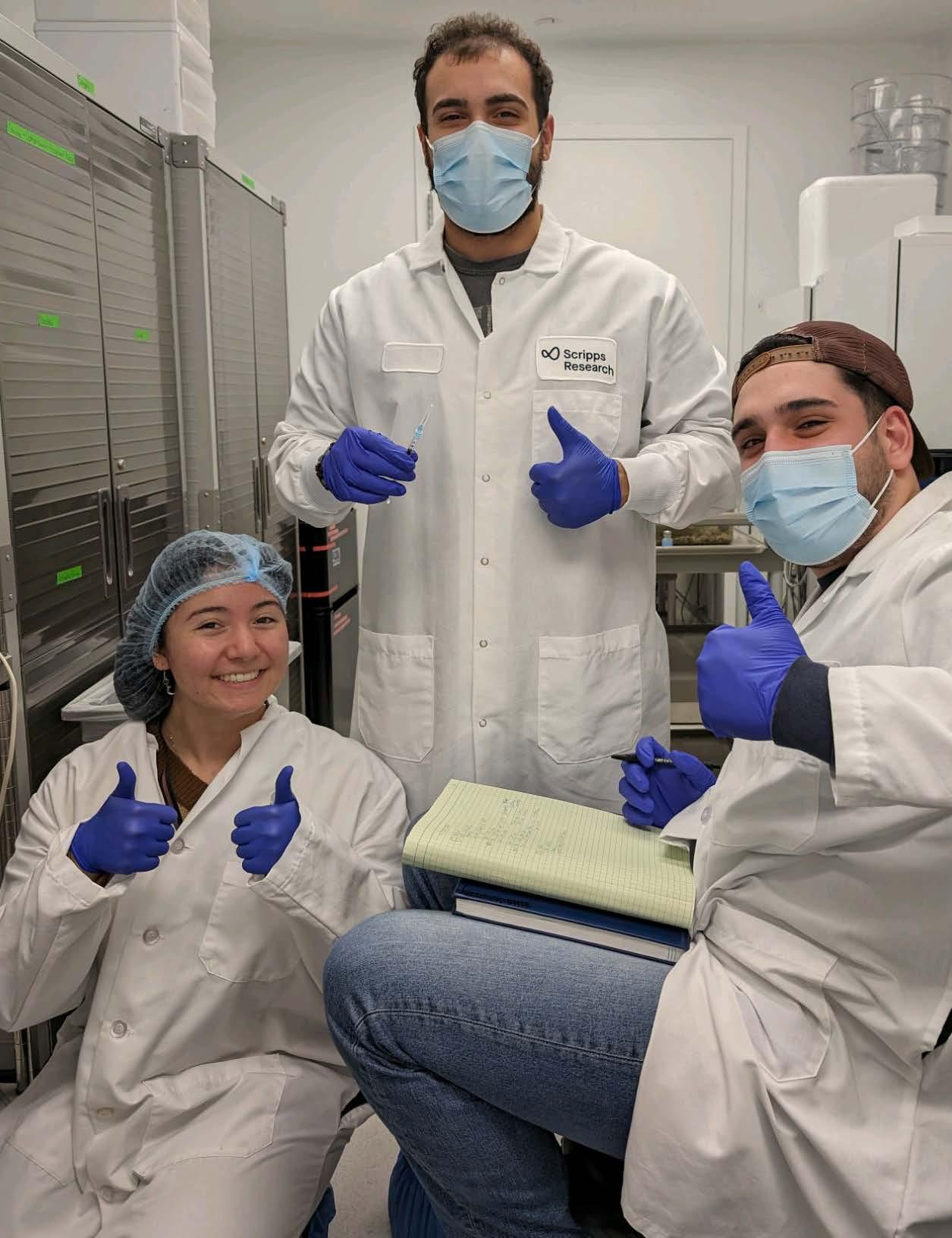

reduction in SWP funds is impacting instructional and student services that are key to ensuring programs are aligned with industry needs and that students are prepared for the workforce. SDCCD and other colleges across the state are advocating with state legislators to reinstate the $60 million that was cut from the SWP budget.
“It’s a critical need,” she said. “We need to see increases and not cuts.”
The MIP program has served more than 700 students since its inception and has developed relationships with 200 employers. Students earn college credits based on their hours of work experience. More than 50% of overall program participants have been adult learners, and, of the 191 students in the spring 2025 cohort, 48% were first-generation college students.
Consuegra, Mesa College’s internship coordinator, said the college continues to explore various funding sources to offer stipends to student interns from specific populations, such as undocumented students or veterans.
Mesa College student Angel Wilson obtained three internships to help prepare him for a career in the law: one at the Alternate Public Defender’s Office, a second with U.S. District Judge John A. Houston, and a third in the office of Congressman Scott Peters.
Wilson said the $1,000 he received from Mesa College paid for the suits he needed for the work, plus gasoline to get to the jobs, and other expenses. He’s hoping to continue having internships as he transitions his education to a four-year university and then law school.
“The experience that I’ve garnered has really set me apart,” he said. “By the time I graduate law school, I’m going to have six years of experience under my belt. Hopefully, it will make me a better student, a better person, and a better attorney.”
Shawn Fawcett, Work-Based Learning coordinator at Mesa College, said SDCCD is committed to helping students with their internships so they can pursue their career goals.
“We all believe in this work,” she said. “We see the potential in each student.”
While the MIP program offers a wide range of internships for students, there also are Work Experience programs at all SDCCD colleges across a variety of majors.
For example, Miramar College offers work experience for students in child development, business, exercise science, aviation, and paralegal programs. Many of those fields require students to have work experience to get licensing or certification, said Kyoka Hashimoto, Miramar College’s faculty Work Experience program coordinator. Other students, she said, are already employed in the career field and want to earn college credit for the work they are doing. While faculty members help students find internships, most students find the internships on their own, Hashimoto added.
One avenue for students to find internships is through Handshake, a districtwide job board. The free app-based service allows students to search by industry for jobs or internships. The SDCCD recently received an award from Handshake for setting the standard in collaborating with business and industry to benefit students.
While Miramar College students get college credit for participating in internships, many remain unpaid. Support is provided in other ways, including having an instructor work with student interns, which Hashimoto said is a valuable experience.
“You are not alone. You are doing this with the guidance of a professional who’s in the business,” she said. “They have a cheerleader to guide them along.”
In fall 2024, Miramar College started a new program offering work experience credit for 16 servicemembers who are being held in the Marine Corps Air Station brig. To earn college credit, the military personnel are performing a wide variety of jobs, such as one who is creating a spreadsheet showing overstocked and understocked items in the brig.
“It’s life skills that these students need once they get out and come into the workforce,” Hashimoto said. “It builds a lot of confidence in the students.”
The Work Experience program at City College also focuses on specific majors, including business, child development, sustainable agriculture, and graphic design, said Nicole Vargas, faculty Work Experience coordinator.
Although almost all internships at City College are unpaid, the college is partnering with Yo Soy STEM, which is supported with federal grant money, to offer paid internships to Latinx and low-income students beginning in the spring semester. About 40 interns a year will be paid through the federal grant, she said.
Vargas said internships show students how to apply what they have learned in the classroom.
“The magic happens when they can see the results in a
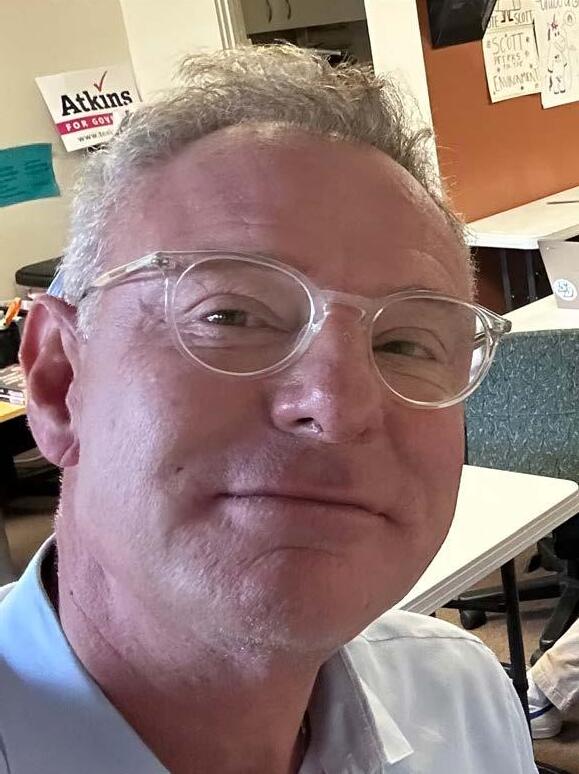

Hear directly from students and staff about the power of the MIP at Mesa College by navigating to bit.ly/mesaimpactship-program or by scanning the QR code.
By the time I graduate law school, I’m going to have six years of experience under my belt. Hopefully, it will make me a better student, a better person, and a better attorney.
—Angel Wilson, Mesa College student
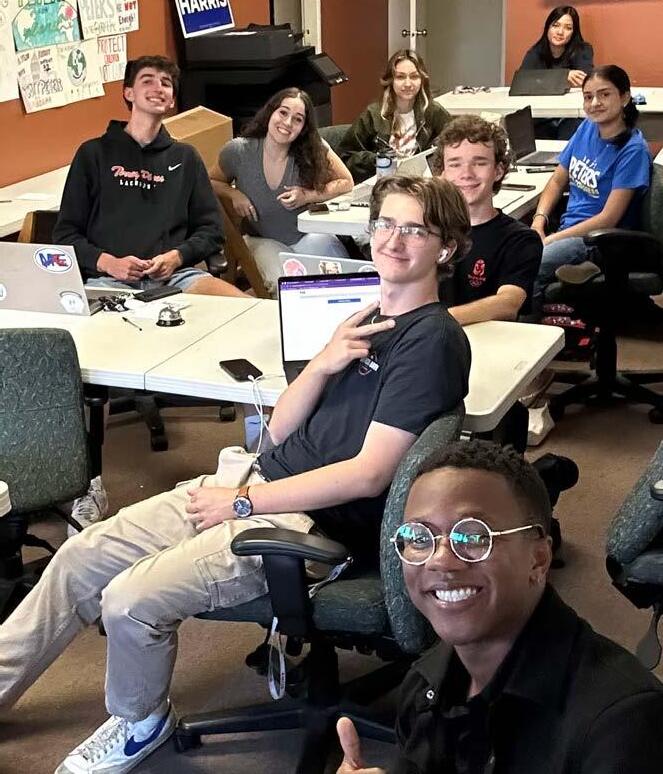

professional setting,” she said. “It’s building a bridge from the educational experience to a career.”
Growth in Work Experience programs for community college students is limited without paid placements. As a District responsible for a $5.8 billion impact on the local community — 80% of which comes from alumni who stay to work in the area — representatives from the SDCCD visited Sacramento in March to advocate for Assembly Bill 323. The bill, introduced by Assembly Higher Education Committee Chair Mike Fong in early 2025, would require the California Community Colleges Chancellor’s Office to revise policies, regulations, and guidance necessary to provide students, employers, or both with paid workbased learning opportunities.
Currently, community college districts cannot use Strong Workforce funds to support students with paid internships. In a letter of support from the SDCCD to change that policy through AB 323, Chancellor Gregory Smith advocated “it could enable students to gain practical experience in their field of study while earning a wage, and it could allow employers to access a pool of skilled and motivated workers. The bill would also authorize a community college district to use funding allocated in the Strong Workforce Program to directly support students, employers, or both, for paid workbased learning to increase employability and employment.”
According to recent data, students participating in work-based learning are more likely to complete their degrees and have higher success rates. At City College, students participating in work-based learning are 12% more likely to complete and have 7% higher course success rates than those who are not participating in workbased learning.
Perman, who recently spoke in Sacramento on behalf of the District and California community college students, said that many SDCCD students must support their families while attending community college. They cannot cut paid work hours for unpaid internship experience, but often their current part-time job is not aligned with their career or academic goals. Access to paid internships can change that dynamic.
“If they are unable to get paid placements, that’s cutting into their opportunity to either go to school or earn wages,” she said. “For our students to be successful in the field, they need paid internships. That’s the most equitable opportunity for them to become competitive for the jobs they are seeking for their career goals.”
Twenty years ago, Vincent Vigil was a student at San Diego Mesa College; today, his life’s work has been inducted into the Rock & Roll Hall of Fame Library & Archives, the most comprehensive repository of rock ‘n’ roll history.
Looking back at his time at Mesa College, Vigil, 65, fondly remembers the Museum Studies program, which teaches students the ins and outs of museum work, from curating exhibits to creating public art spaces without walls.
“I learned a lot; I was a sponge. I loved it so much,” he said of the journey that led him to curate his own collection.
Although he became a photo collector later in life, his curiosity for music photography started early with his adoration for both well-known and unsung rock photographers, including the likes of the late Linda McCartney (wife of former Beatle Paul McCartney), Mick Rock of Britain, and Astrid Kirchherr, an acclaimed German photographer. Vigil first began collecting photographs in 1988 after visiting a Linda McCartney exhibit in a La Jolla gallery, where he purchased two original prints.
College Art Gallery in October 2024. His exhibit titled “The Beatles/I Saw the Photograph from The Vincent Vigil Collection” included 60 one-of-a-kind photographs of the Beatles between 1962 to 1969. The monthlong display stunned students, professors, and community members alike, as Vigil eloquently showcased the long-standing influence the Beatles have had on global pop culture.
“I was also eager to present the younger generation with the Beatles. It’s tragic that lots of the best artists are discovered after they pass away,” Vigil said. “Another reason why I wanted to do this for Mesa was my connection to the brilliance of Alessandra. The exhibit really came to life because of the eye Alessandra and (gallery coordinator) Jenny (Armer) have. I trusted them.”

Yearning to pursue a professional career as a collector, Vigil found the Museum Studies Program at Mesa College in the late 1990s. He had a good rapport with his then professor, Alessandra Moctezuma — a friendship that would later inspire his lifelong career.
“I admired that woman; she was always sleek, fashion is her thing,” he said, “and she taught very well.”
A future manifested. As a student at Mesa College, Vigil received an invitation from the Museum of Photographic Arts (now part of The San Diego Museum of Art) in Balboa Park to join its permanent artist collection. The residency was beyond his wildest dreams for the up-and-coming collector.
“I thought I died and went to heaven,” Vigil said. “The museum wanted all still photography, so I offered a mixture of different scenes.”
Vigil was asked to curate for his alma mater’s Mesa
Before finding renowned success as a collector, Vigil first studied photography at Palomar College and read about collectors in a photography magazine.
“I wanted to become known as a collector like Elton John; he’s such an inspiration,” Vigil said.
Vigil built his own legacy. He is now represented by the Morrison Hotel Gallery, a premier art gallery in West Hollywood and is awaiting to make a contribution to the GRAMMY Museum.
“The Morrison Hotel Gallery opportunity still fascinates me, because I’m very shy and introverted,” he said. “They represent photographers and their estates. I am so proud, because my legacy will go on — the legacy of some of the greatest musicians of all time.”
While Vigil is widely successful today, he wants every aspiring artist to have the same opportunities he had: access to an affordable education of the arts, the kind he took in at Mesa College.
“The term starving artists is very real,” he said. “If a person wants to do it, make art, learn about art, they should qualify to do it. When you are an artist, nothing can stop you. You have a need to create in every aspect despite the cost.”
He continued, “Regardless if you have any money or not, you will find a way to keep going. When you fall in love with something, like I fell in love with photography, don’t stop, don’t copy, but be inspired.”
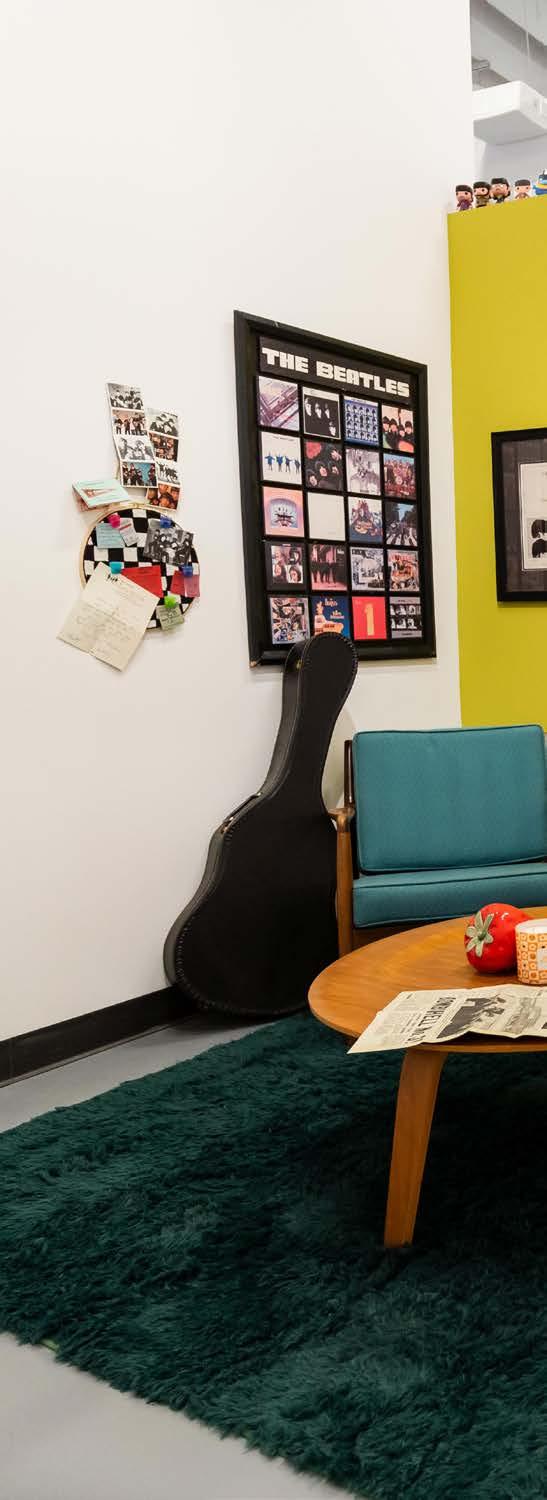




In October 2024, 60 one-of-a-kind photographs from The
Collection were displayed during an exhibit at the

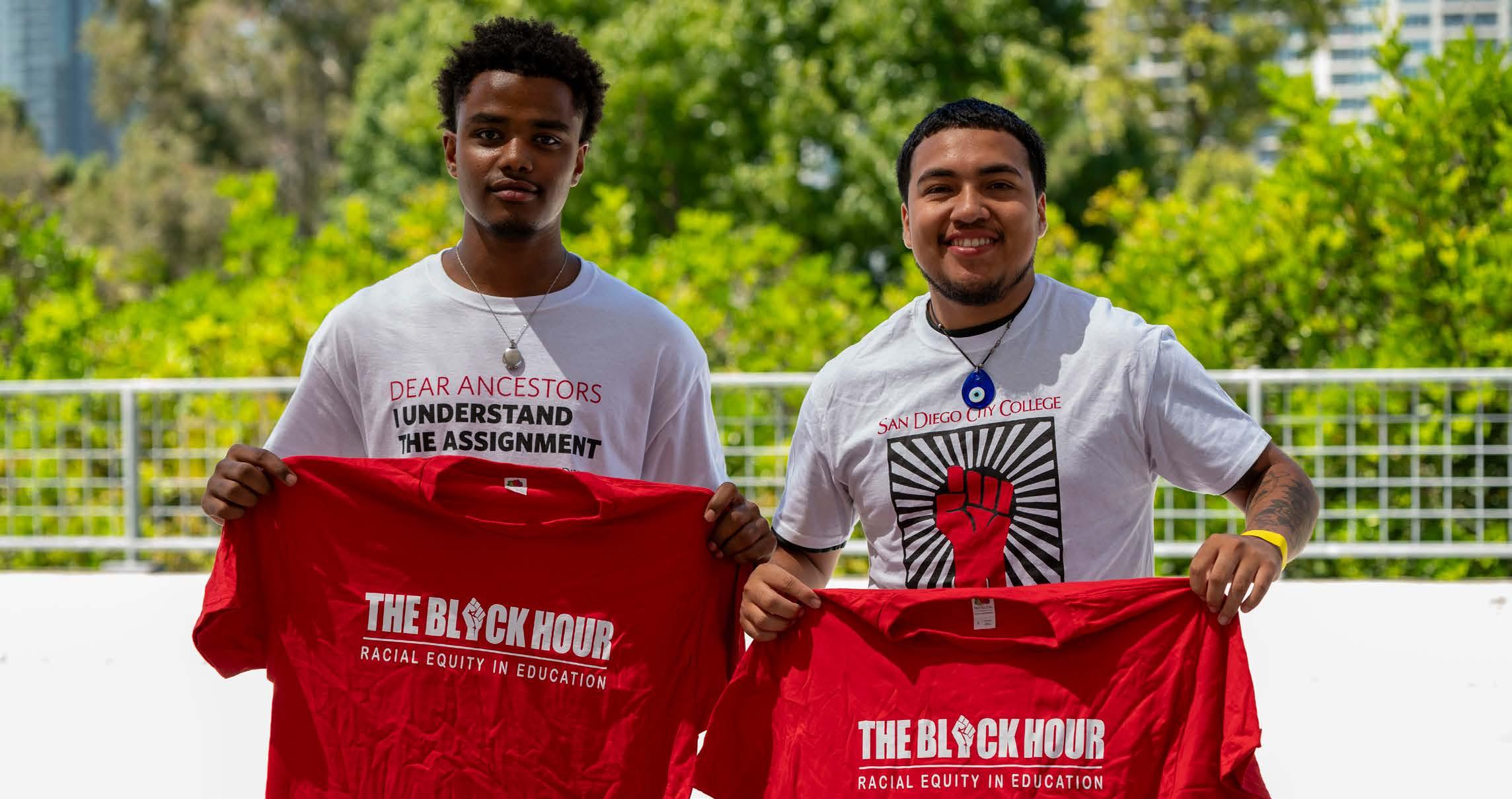
San Diego City, Mesa, and Continuing Education colleges are primed to earn a designation as Black Serving Institutions
San Diego City College student Morgan Marino knew she chose the right school when her Umoja professor surprised a fellow Black student with a new MacBook.
“She was the only student in the class without a laptop, which could seriously affect one’s academic performance because everything we submit is online,” Marino recalled. “To witness that and seeing the student crying with tears of joy really just showed me that we’re not just students to our professors, but family.”
The episode illustrates the support that SDCCD colleges offer their Black and African American students, and why San Diego City, Mesa and Continuing Education colleges are primed to earn a designation as a Black Serving Institution — while
the fourth, San Diego Miramar College, will seek the designation at a later date based on Black student enrollment efforts.
Under Senate Bill 1348, authored by state Sen. Steven Bradford (D-Gardena) and signed by Gov. Gavin Newsom in fall 2024, colleges or universities that excel in assisting Black students and that have at least 10% or 1,500 students who are Black or African American can be eligible for a BSI designation that can help secure various state and federal grants. To qualify, colleges must have a Black student success program, provide academic and basic needs support to assist Black and African American students, track the impact the support is having on Black student outcomes, and commit to serving Black and African American students in their mission.
Currently, Assembly Bill 335 (Gipson), which would follow through on the promise established by SB 1348 by setting aside $75 million for grant programs that would benefit California BlackServing Institutions, is awaiting review by the Assembly Appropriations Committee.
It’s all part of a comprehensive effort at boosting Black student success. Nearly two-thirds of Black and African American students who attend a higher education institution in California begin their postsecondary journey at a community college, but 63% of Black community college students don’t earn a degree, certificate, or transfer to a four-year institution within six years.
More than 5,000 San Diego Community College District students are Black or African American, and City and Mesa colleges, as well as College of Continuing Education, already meet benchmarks set forth in SB 1348. Presidents at all three colleges say they will seek BSI designation. For its part, Miramar College proudly serves hundreds of Black students each year, and college leaders are hopeful it can also secure BSI designation in the future as enrollment grows.
Students need no convincing that support is available to help them succeed. Navy veteran George Buchanan said he felt the love the moment he stepped on the Mesa College campus when he was dropping off his then-wife to register and was approached by a counselor who wondered why he didn’t do the same. “He said, ‘You’re at the right campus, you’re at the right school, watch this campus work.’ And the campus worked. I got two ‘As’ in my first semester and said, ‘Oh, honey, I’m home!’ ”
Buchanan praised the care permeating the Mesa College campus, especially during a trying time shortly after the pandemic when the end of his marriage was followed by the death of his mother.
“I was at a very low point,” said the single father. “But there’s a lot of people paying attention to you. I’m literally sitting in class with tears falling down my face, and, all of a sudden, I had people reaching out to help me. I was seen.”
Chenelson Estiverne, a Haitian immigrant and College of
Continuing Education student, lauded his college for the supportive environment that permeates his City Heights campus.
He said: “I tell my friends in the Haitian community, ‘Hear me out, this school is for us.’ ”
Among services supporting Black student success at City College are the Umoja community, which assists Black students who desire to transfer to four-year colleges and universities; Hermanos Unidos Brothers United (HUBU); and a chapter of A2MEND, an acronym for the African American Male Education Network and Development. Mesa College has adopted The Harambee Protocol, which includes an A2MEND chapter, a Black Student Union, Umoja, the Black Faculty Counselor Collaborative, a Black Studies Department, and more, as a collective of programs to support the success of Black students. College of Continuing Education has a thriving Black Student Success Program and an A2MEND student charter, and it recently made history by partnering with Sacramento State University’s groundbreaking Black Honors College, providing a pathway for SDCCE graduates to transfer to one of the nation’s leading universities for Black students.
Said Marino, a Navy veteran who has her sights on transferring to a University of California campus or historically Black college or university for a bachelor’s in business and then to Harvard for a master’s in screenwriting: “It’s extremely important for me to achieve academic excellence because of my desire to contribute something positive and uplifting to society.”
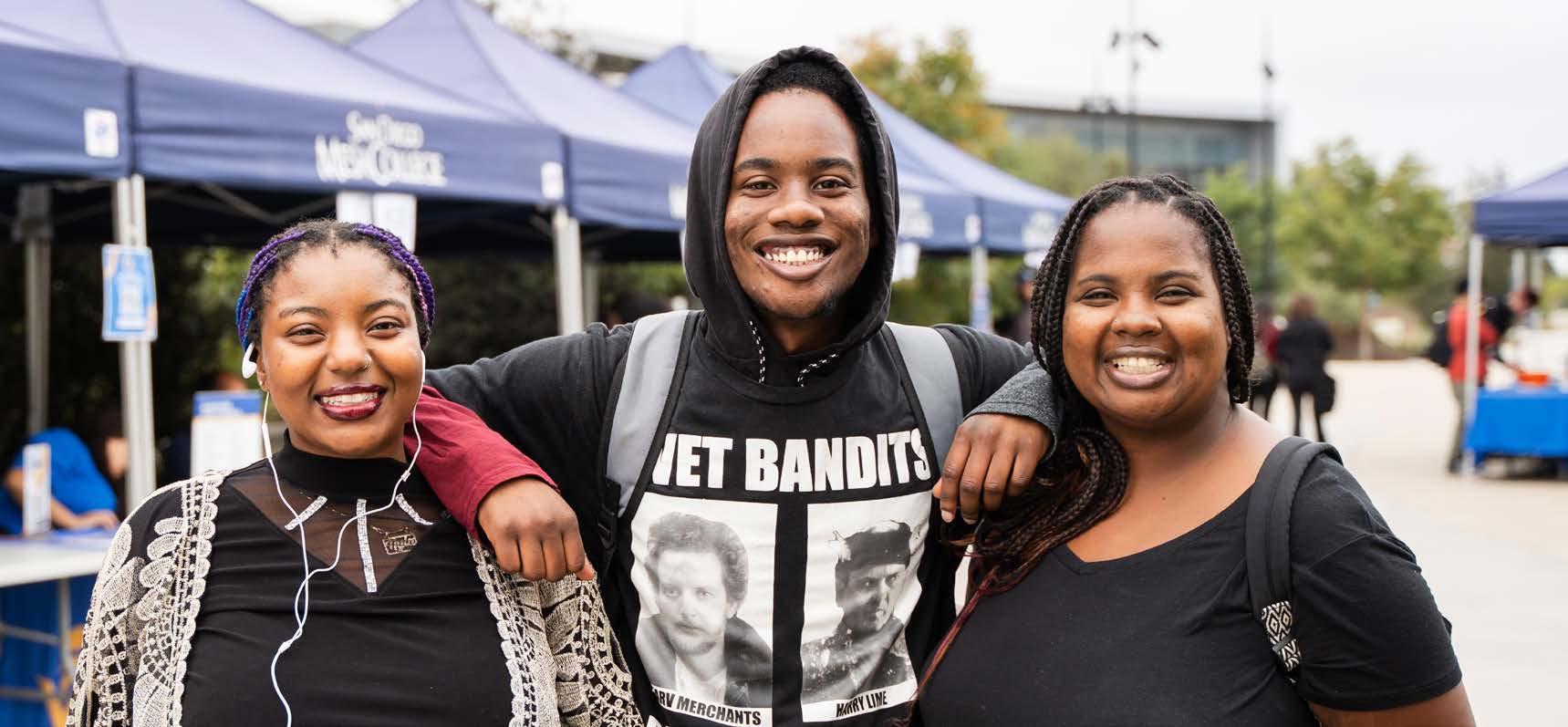
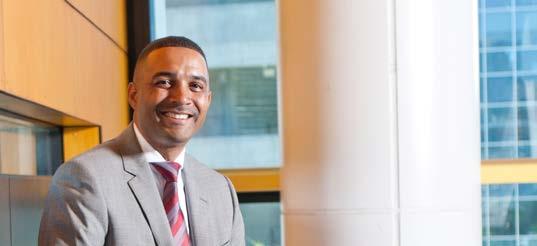

When first walking onto the San Diego City College campus, a 23-year-old student from Mexico City said he was unsure of his next steps — until he ventured into the Undocumented Resource Center. After his day of clarity, the center played a critical role in providing wraparound services that led to his earning an associate degree before transferring to San Diego State University.
“It’s helped me find a lot of resources I didn’t know existed,” said the student, who benefited from free legal aid, help filling out his California Dream Act application, academic and career counseling, and the California Dream Act Service Incentive Grant for completing 150 volunteer hours per semester, not to mention camaraderie and conversation.
Thanks to an expanded professional staff, a new location, and growing collaborations with nonprofits and oncampus departments, the Undocumented Resource Center is on a roll. Previously known as the Dreamer Resource Center, the office underwent a complete makeover and moved during the 2024 summer break to a roomier and easier-to-find space in the L Building. For the first time, the center is staffed with a full-time coordinator, Magaly Corro Flores, and parttime counseling faculty, Gabriela Soto Garibay.
Corro Flores said the former Dreamer Resource
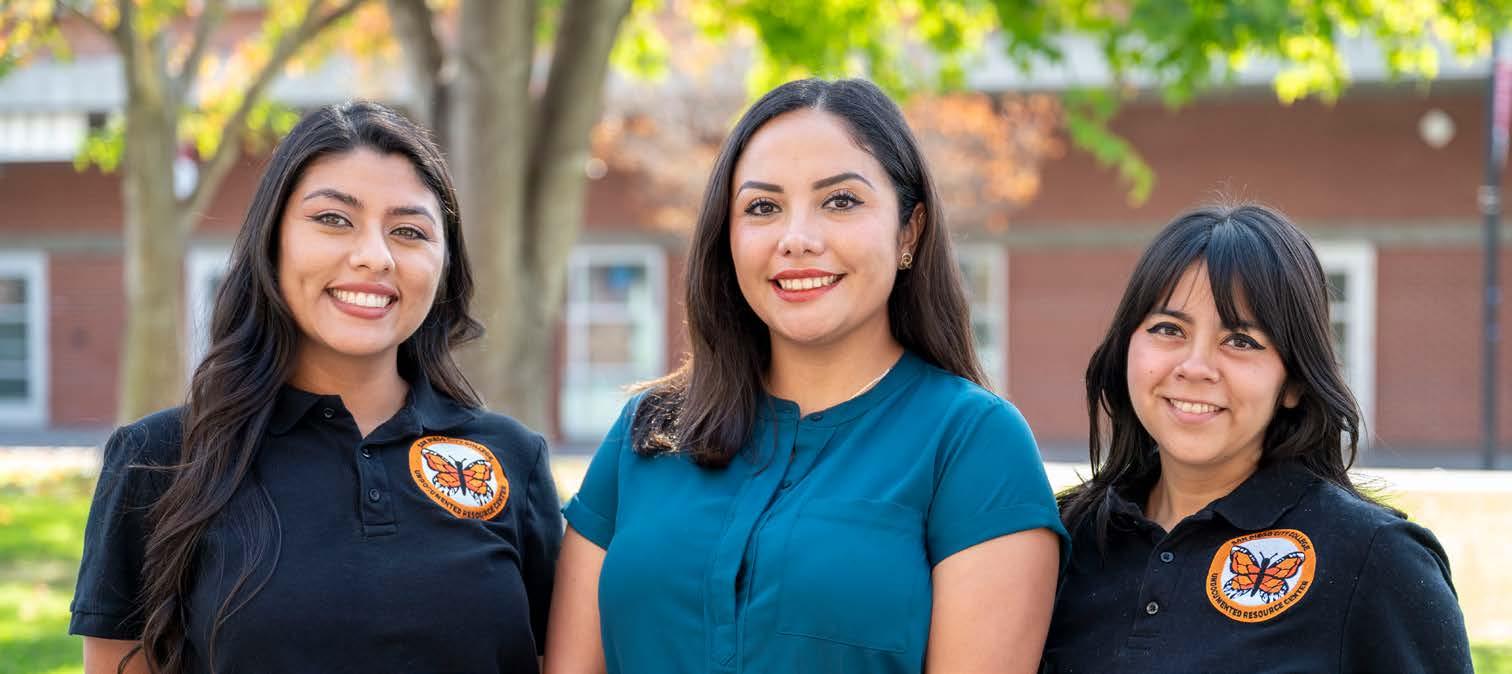
Center was renamed for better outreach to undocumented students who aren’t familiar with the DREAM Act. And while it has expanded its target audience to include faculty, classified professionals, and allies, the Undocumented Resource Center’s mission remains unchanged: creating an inclusive campus culture that supports undocumented and mixed-status students achieve their academic and personal pursuits.
The Undocumented Resource Center assists scores of City College students each semester, including 67 who registered in fall 2024 for the UndocuScholar Program initiative aimed at ensuring undocumented students reach their educational goals. That program alone provides students with backpacks, flash drives, opportunity drawings, structured check-ins with counselors, and updates on the latest available resources. “This is just one of many examples showing how we are here for our students,” Corro Flores said.
Collaborations are critical. The Basic Needs Center supports efforts with monthly, culturally relevant grocery gift cards for eligible undocumented students. Jewish Family Services provides free immigration legal services through the Higher Education Legal Services initiative. Access and Alliance San Diego help students learn how to start their own businesses. Dreams for Change helps with federal and state tax and Individual Tax Identification Number filings. “We could not do this on our own,” Corro Flores said, adding that despite the change in the new administration’s approach to immigrants, the Undocumented Resource Center will continue to charge ahead.
“We’re going to keep our doors open, we are going to continue to offer our services, and we are going to continue to provide an option for virtual appointments for people who might be too afraid to come in. If anything, we’re going to be advocating on behalf of our students even more,” she said.
Corro Flores herself is a former undocumented student who was born in in the Mexican state of Quintana Roo and grew up in Mexico City. She was determined to become an immigration lawyer, but a lack of finances kept her from following that dream. Instead, she did the next best thing: she completed her education, including a master’s degree in counseling, and works as an educator focused on helping the immigrant population. She is especially proud of the earlier mentioned 23-year-old student who is transferring to San Diego State to pursue a path to bachelor’s, master’s, and doctoral degrees in geology, with a plan of finding a career as a geochemist or volcanologist.
“He used to be hesitant, and he was a little shy, but he has grown, he has flourished, he has reached out to help other students, and now he’s transferring to San Diego State,” Corro Flores said. “Students come in here shy; they leave feeling empowered, confident, and secure.”


On any given day at San Diego Mesa College, you might find geography Professor Waverly Ray guiding a group of enthusiastic students through the complexities of climate change or discussing innovative ways to address global environmental challenges. For Ray, teaching is more than lectures and textbooks — it’s about empowering students to see themselves as changemakers in a world that needs sustainable solutions.
Ray’s journey at Mesa College has been marked by transformative projects and initiatives. One of her most notable roles is as co-director of the Climate Literacy @ Mesa project. Supported by the TerraMesa Environmental Sustainability & Conservation Club and Audubon on Campus, the initiative works to increase climate literacy among students and instill sustainable practices across the campus. Under Ray’s leadership, the project
has grown into a thriving community of students eager to tackle pressing issues like conservation and climate action.
Her passion for hands-on learning has taken her to new horizons. In 2023, Ray sailed aboard the Research Vessel (R/V) Thomas G. Thompson from Seattle to Honolulu as part of STEMSEAS, a National Science Foundationfunded program that connects students with faculty and mentors through immersive geoscience experiences. A year later, she joined the R/V Sally Ride, journeying from Newport, Oregon, to San Diego.
In summer 2024, Ray joined a permafrost hydrology research team in the far north of Greenland as an Educator Fellow with Polar STEAM. This NSF-funded program pairs educators and artists with polar researchers to collaborate on understanding some of the planet’s most vulnerable ecosystems.
While stationed at Pituffik Space Base and the town of Qaanaaq, the team collected water samples, installed groundwater wells, and measured streamflow. The vital research done for the program aims to improve climate models and advance researchers’ existing understanding of the Arctic water cycle amid accelerated climatic changes.
Reflecting on her work, Ray shared, “My mission is to empower students to see themselves as key players in creating sustainable solutions. Through mentorship, hands-on experiences, and community-driven projects, we’re building pathways to impactful careers and meaningful contributions to the world.”
Ray’s work is a testament to Mesa College’s commitment to equity, excellence, and sustainability. Through her leadership, students are not only learning, but they’re shaping the future.


A video of the Polar STEAM experience featuring Waverly Ray, can be found at bit.ly/raypolarsteam or by scanning the QR code here.
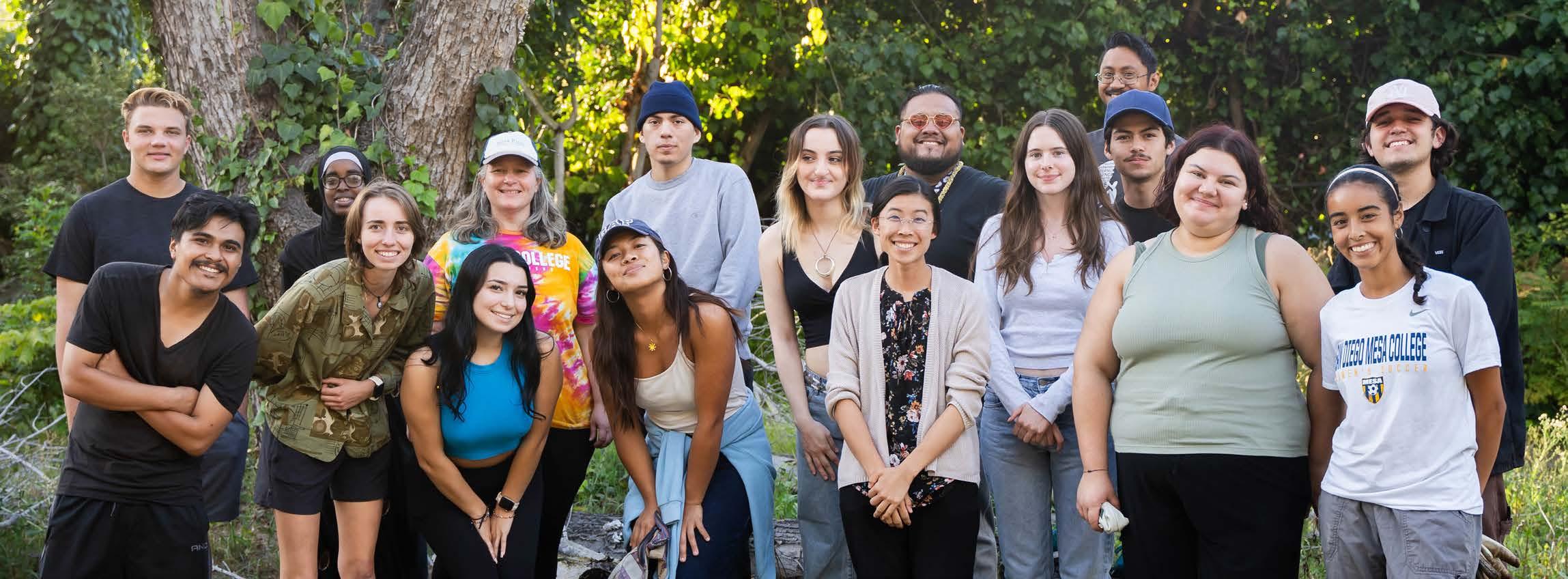
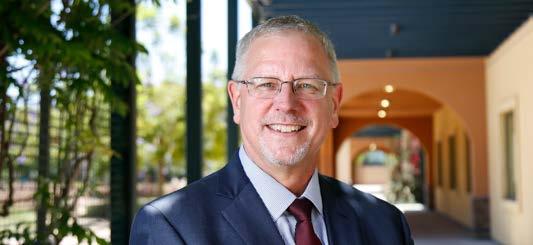

Six young women graduated on December 18, 2024, from a unique program that removes financial barriers that often prevent women from becoming an emergency medical technician.
The Earn While You Learn program, as it is known, is a partnership between American Medical Response and San Diego Miramar College. Under the program, AMR paid for the cadets’ tuition and books as well as for time they spent shadowing AMR paramedics and EMTs responding to actual emergencies. Cadets also were offered medical, dental, vision, and 401(k) benefits. With the support of the Conrad Prebys Foundation and other private donors, Miramar College is covering the cadets’ national EMT exam and credentialing fees.
Women are underrepresented in the field of emergency medical services, so AMR and Miramar College accepted only female applicants for the program, making it the first all-female EMT academy in the region. Nationally, women make up only about one-third of all EMTs.
“The program was a huge accomplishment for me,” said 20-year-old graduate Camryn Leon. “I never even thought this opportunity would be available to someone like me. They made this entire program an amazing experience. I got to become close to these amazing ladies, and I am excited to make a difference.”
During the 16-week academy, which began in September at Miramar College, the six cadets learned a wide variety of EMT skills, including driving an
ambulance, delivering a baby, performing CPR, using an Automated External Defibrillator, and administering an EpiPen to someone experiencing a life-threatening allergic reaction.
“We are extremely proud of this special group of women who have stepped forward to serve their community,” said Eric Nixon, community relations coordinator at AMR San Diego. “This academy will put more women on a rewarding career path while bolstering the ranks of female EMTs and paramedics in the San Diego region.”
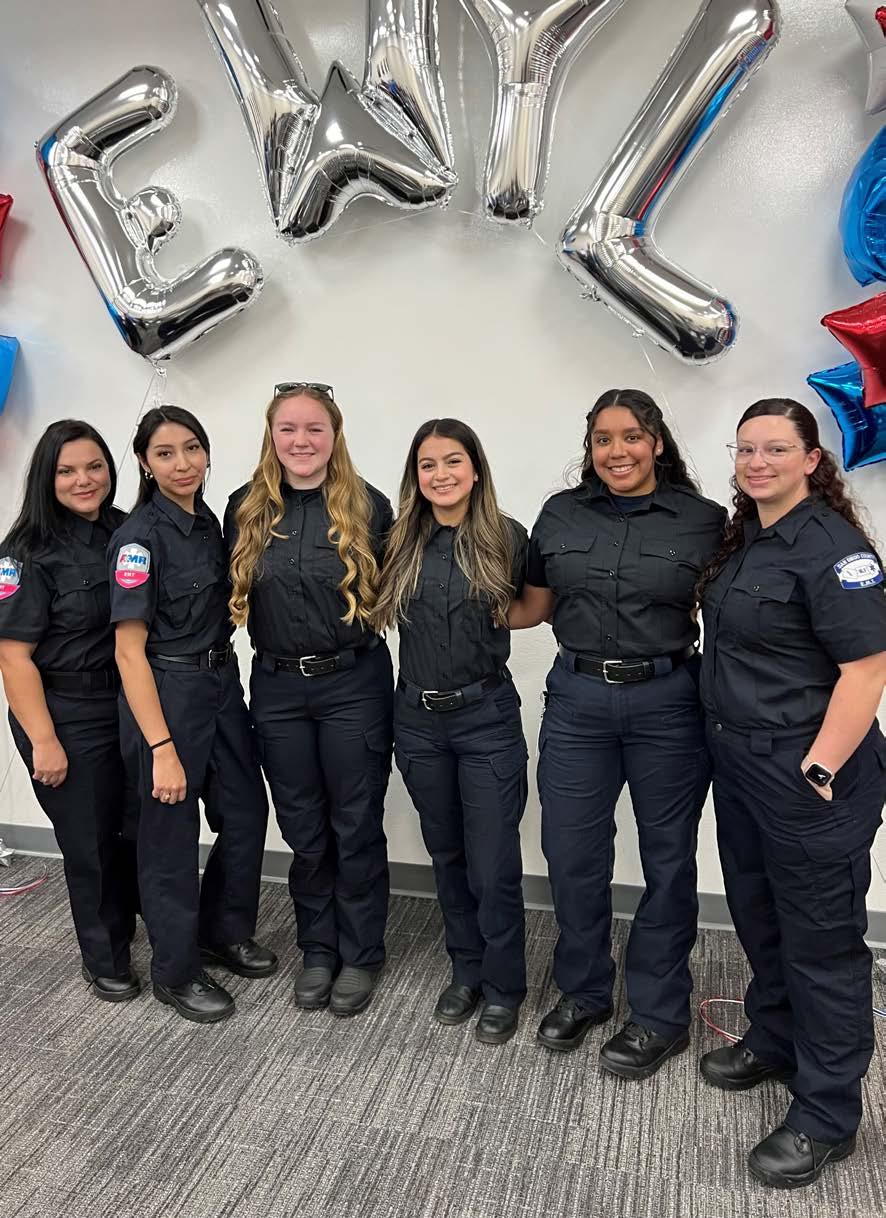
Upon completing the academy and passing an exam administered by the National Registry of Emergency Medical Technicians, the graduated cadets will be hired by AMR, the largest ambulance transport company in the nation.
“We are truly grateful for the opportunity to partner with AMR, as this collaboration was essential to our students’ success,” said Jacqueline Hester, dean of the School of Public Safety at Miramar College. “The financial support provided was not just a number; it
was a vital lifeline for our students who have completed our EMT program, especially those who faced financial challenges. This assistance allowed them to fully engage in their journey, offering invaluable educational and learning opportunities. Together, we are dedicated to closing the equity gap for women pursuing careers in emergency medical services.”
The graduation ceremony took place in Kearny Mesa at AMR’s regional headquarters.
While this was the first all-female Earn While You Learn academy in the region, two other academies have been held at Miramar College within the past year-and-a-half and included both women and men.

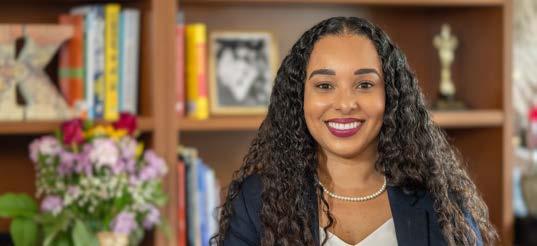
Father and son Luis and Daniel Valdivia are taking automotive classes at San Diego College of Continuing Education together and the journey has been rewarding.
Daniel is trying his hand at the fast-paced automotive-repair industry to explore his passion for cars with hopes to gain a highpaying, hands-on career.
“I was working full time at Home Depot, and my dad encouraged me to try college again,” Daniel said. “I figured, I liked cars so I might as well give it a try, and the program is free. This time, I am doing everything I love.”
While Luis, a Marine veteran, is already accomplished as a combat trucker having worked with diesel trucks and forklifts, he is adamant about being a lifelong learner and is grateful for the opportunity to go back to school with his son.
“I always had the yearning to work on automotive,” Luis said, “and the
chance presented itself at College of Continuing Education at no-cost.”
With techniques they learned in the Automotive Technician labs at the Educational Cultural Complex, the pair run an auto repair shop out of their garage. While they are working on their own vehicles at home, the duo hopes their independent business will bring in revenue down the road.
The Automotive Technician Certificate Program at College of Continuing Education teaches students within nine months how to diagnose and repair problems with engines, brakes, suspension, steering, electronics, fuel systems, and more to meet industry safety practices and procedures.
“Coming onto campus, it’s like you’re walking into the best Mercedes, Audi, Ford, and Chevrolet dealerships,” Luis said, of the automotive garage housed at the Educational Cultural Complex.

He added: “You can work on transmission, oil, balancing tires, alignment, and all the equipment is state of the art.”
He continued: “Once you have the right mindset and you have someone to work with, it becomes repetition and you can rebuild a vehicle or what you choose to do. The instructors are there with you and are guiding you every step of the way; that’s what I like about this college.”
The absence of tuition at College of Continuing Education allows the Valdivia family to build an investment in their future while not worrying about student debt amidst other life expenses.
Upon completion of the Automotive Technician certificate, Daniel will continue taking auto body and paint courses at the College of Continuing Education so that he can begin creating custom built cars from the interior aesthetics to the exterior design, a dream he had since he was young. Luis will use his certificate toward an automotive technology degree from San Diego Miramar College, and he will complete his studies in nursing at San Diego City College to advance from a licensed vocational nurse to a registered nurse.
“Get into something that you’re going to love; love the work that you do. If you want to be a janitor, be the best janitor; if you want to be a mechanic, be the best mechanic,” Luis advised. “If you can pass the torch to someone else, like I did with my son, then you’re making that day brighter for that person. The College of Continuing Education has all the opportunities — and for free — with schedules open day and night. If you want to change careers or be better at something, you can do it.”
San Diego City College women’s soccer team captain Karin Angel is making a difference on and off the field. As an indigenous woman of color, she wants to make an impact on immigrant families like hers. Her mom is from Guatemala and her dad hails from El Salvador.
Growing up she watched her loved ones being deported and since then has found ways to advocate for students who are going through similar situations. She’s involved with Yo Soy STEM, a City College pathway for Chicanx/Latinx students to succeed in STEM in a way that affirms their cultural identity, and is an integral part of City Scholars, a program that supports justice-impacted students.
“My professor and my counselor set a strong foundation for me to do well in school. It’s been a tough journey, but luckily I also have City Scholars,” said Angel, 25. “The program’s financial aid allows me to not have to work but it also requires me to be a great full-time student.”
Angel’s dedication and natural leadership stands out. Before becoming team captain and a thriving student, she was overcoming homelessness and probation, trying many times to change her future. It was not until her sociology professor, Jessica White, gave her a helping hand that she flourished.
“When my professor found out I just got out of jail on my first day of school, she asked me to stay after class,” Angel said. White encouraged her to call 211, the San Diego County assistance hotline, for housing. “I would not be the person I am today if it wasn’t for her.”
WE recently spoke with Angel about being a student athlete and her plans for the future:
QAre you a first-generation college student?
A No one in my family has gone to college when I first started my classes, so I was first-generation at the time. Then my mom enrolled in community college while I was a student at Mesa College. We absolutely inspired each other. She first wanted to get her GED because she saw how much I struggled by not having my diploma, and now she is achieving her degree.
QTell me about your involvement with Yo Soy STEM?
A I was not yet involved on campus, and I saw a poster for a paid STEM internship. I definitely stepped out on a whim as a sociology major.
To my surprise, I was selected to teach elementary school kids basic STEM concepts. It was amazing to see Black and Latinx kids enter the camp thinking science is boring and leave believing that they could become scientists.
QHow do you find the balance of being a student and an athlete?
ABeing an athlete and a student can be difficult. It’s definitely about finding the right balance. Personally, for me, I learned how to say no to things like social hangouts and to take advantage of the study hall opportunities coach allows us during practice. I also plan ahead. Tuesdays and Fridays are my game days, and sometimes we have a two-hour bus ride to get to another college. I do homework or bring reading materials with me on the bus; and I also meal prep.
QWhat are your college goals after you graduate City College?
A
My dream is to transfer to University of San Diego, where my mom worked for ten years. I know the Jenny Craig Pavilion and athletic field like the back of my hand. I am hoping to apply for USD and achieve the Chancellor Emerita Constance M. Carroll Scholarship, so I can play soccer in a place where I grew up helping my mom clean the bleachers. Going there would be a full circle moment for us.
QYou have a diverse skill set and a drive for helping others; what is your dream career?
A I would love to work at City College one day, but for now, after USD, I want to pursue law school or my Ph.D. I am also so excited for a potential new opportunity with City College. They launched a new fellowship for immigration and law. I always wanted to be an immigration lawyer as a kid. I have experienced deportation with my own family getting sent back to Guatemala; because of that I really applied myself to this fellowship.
